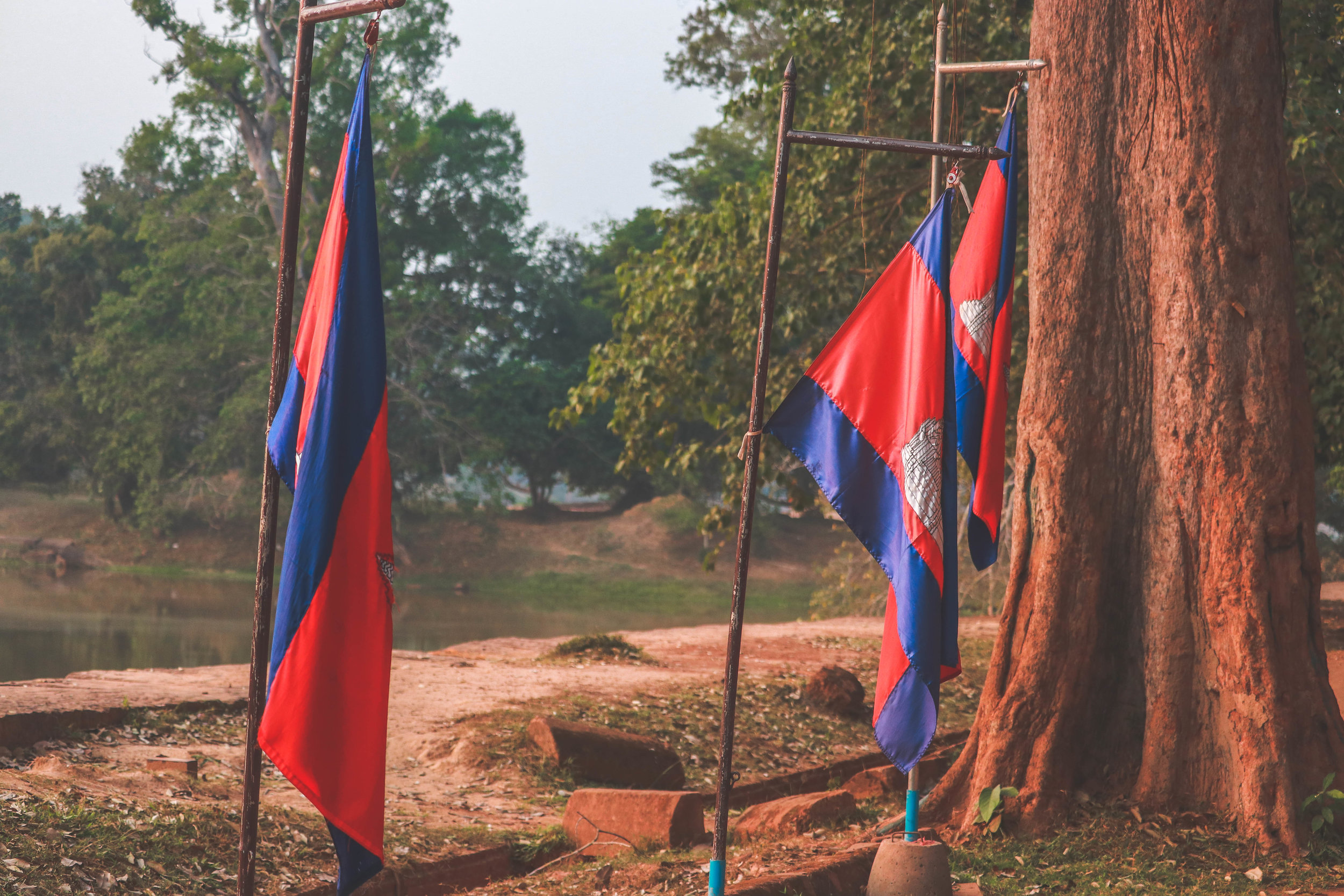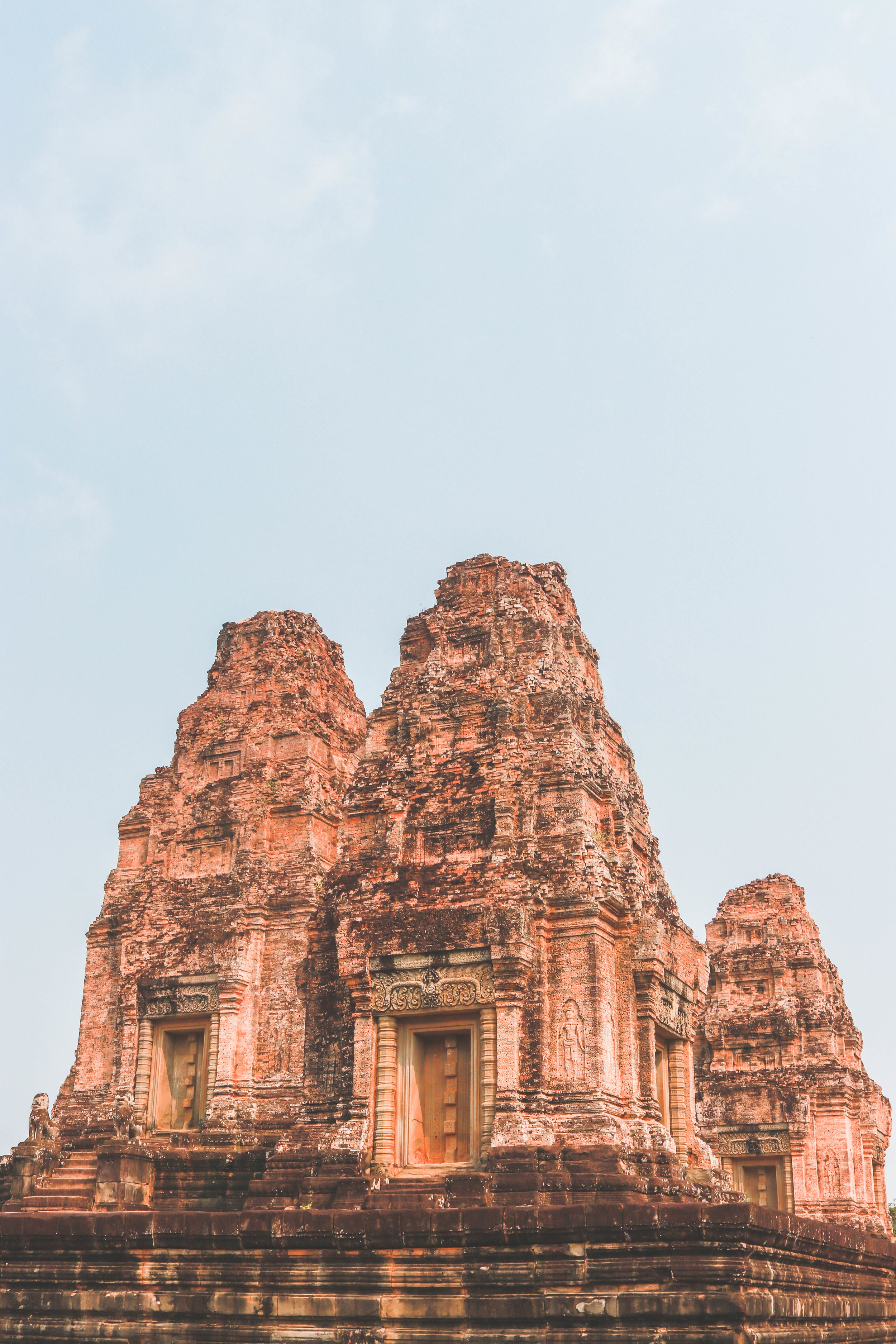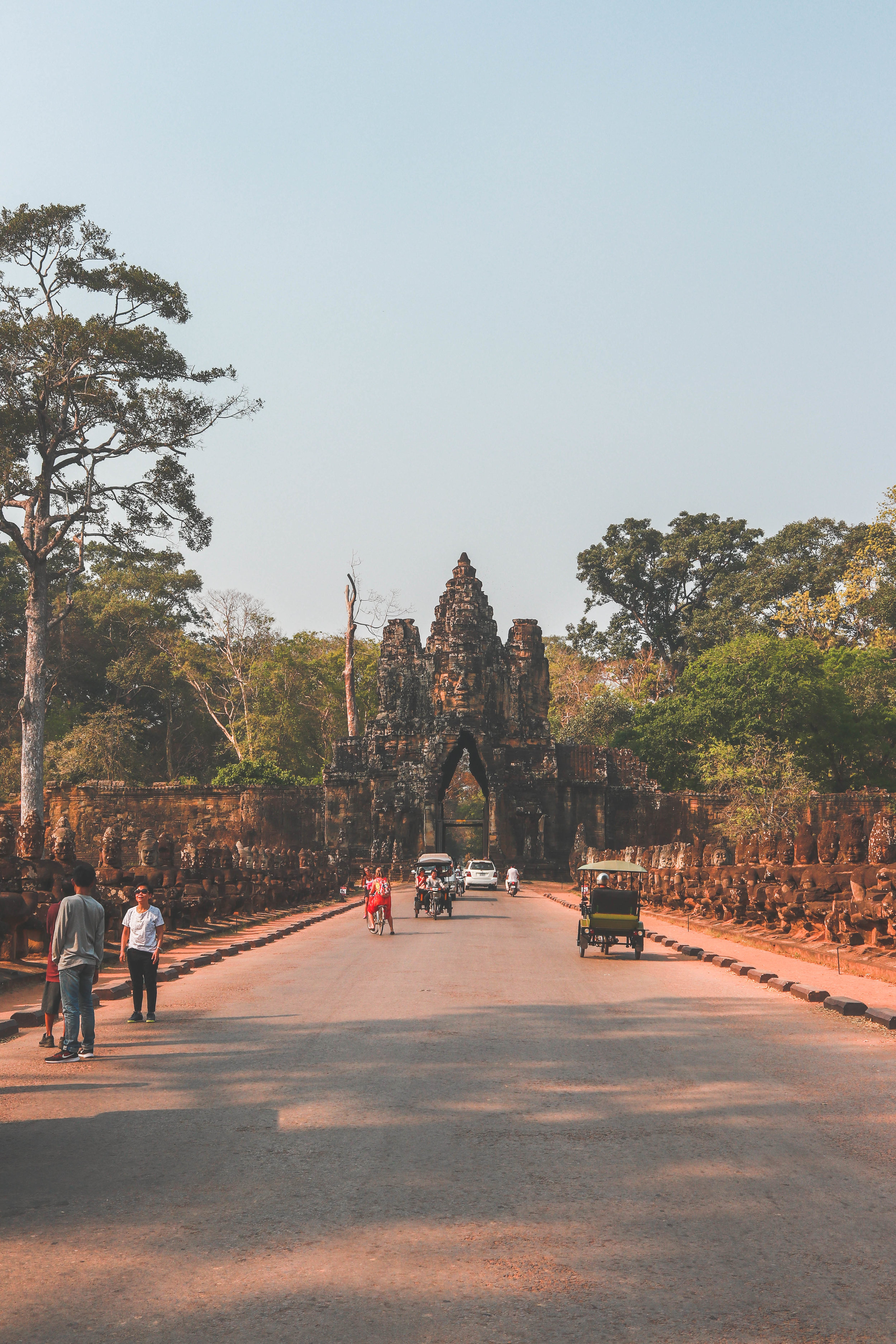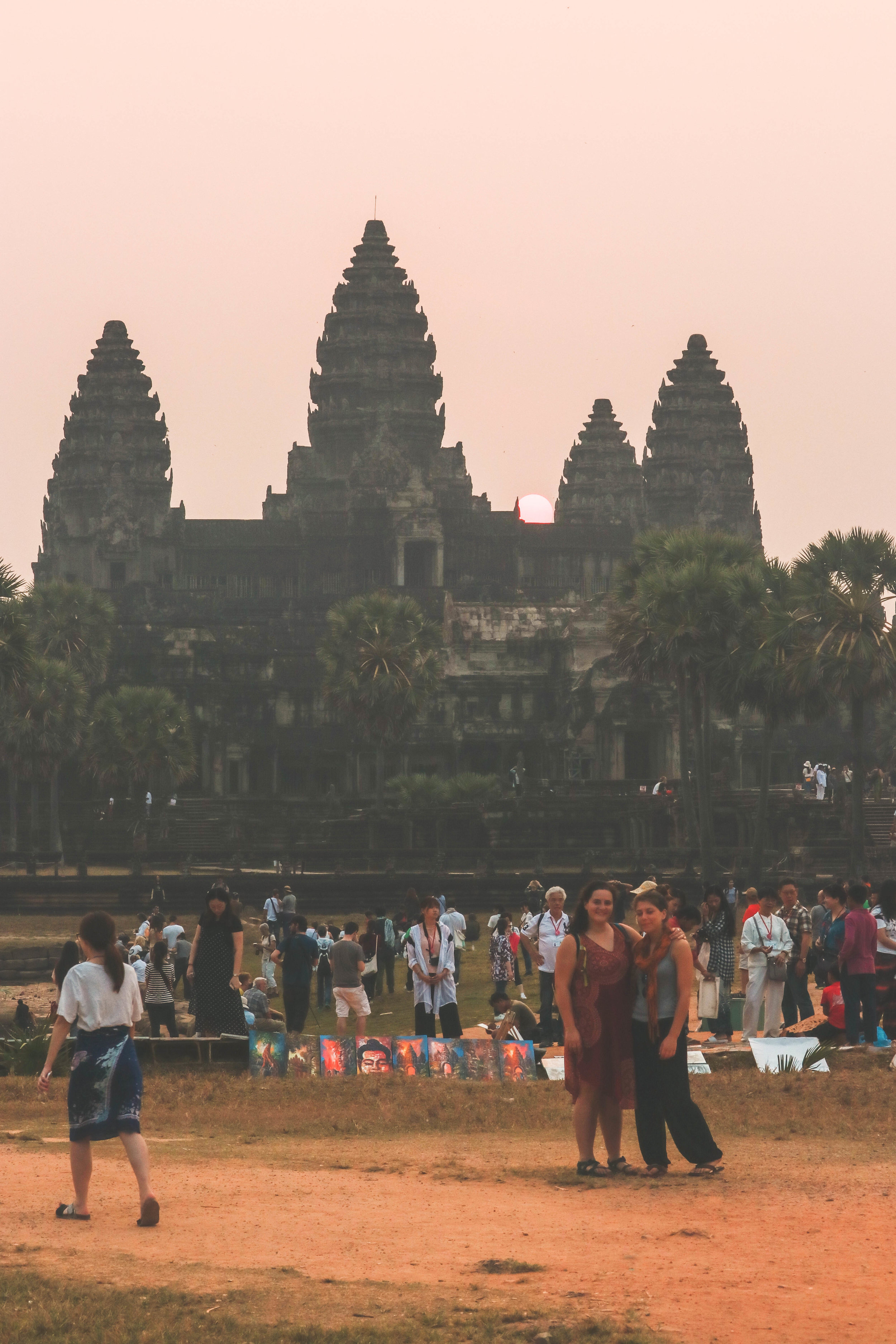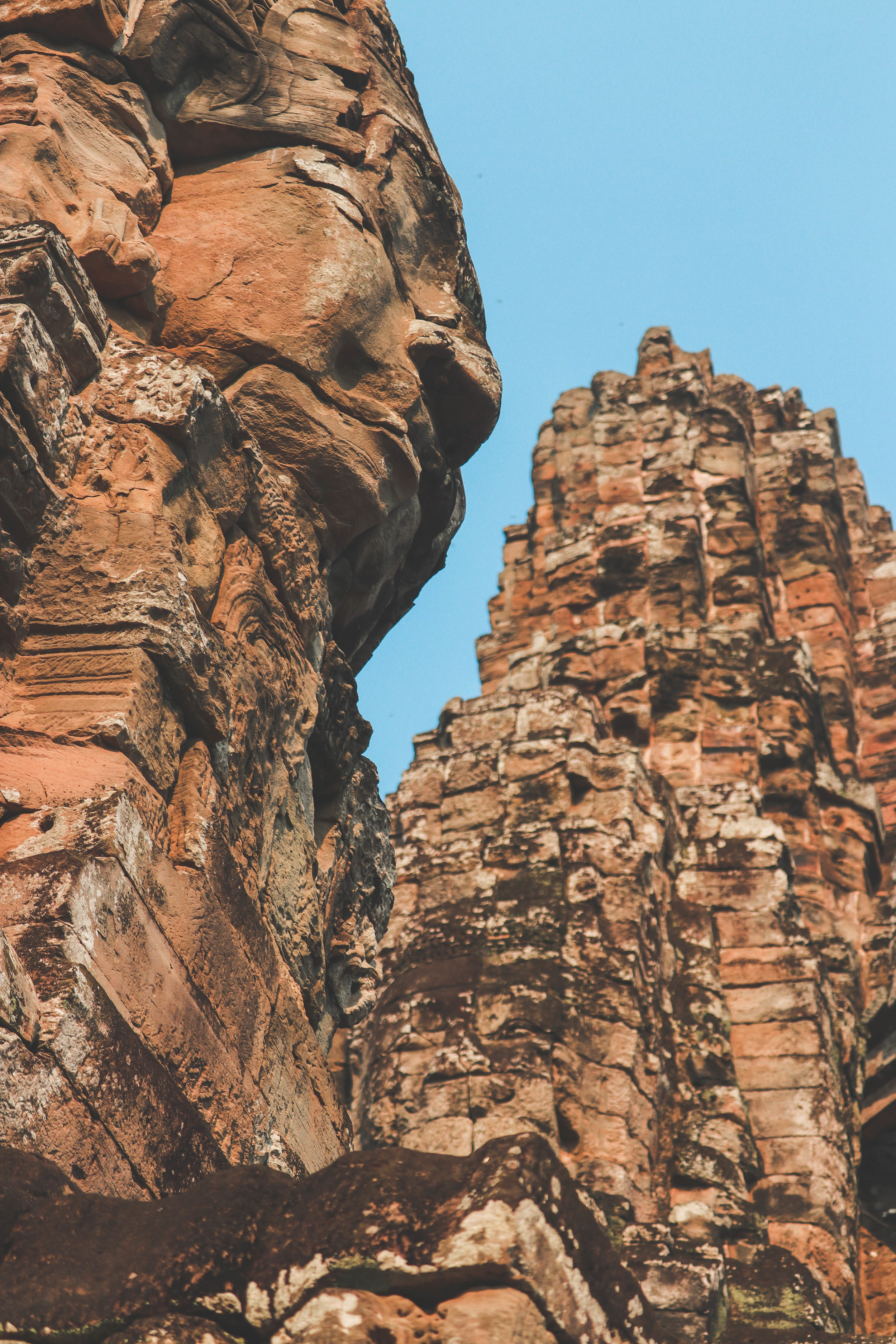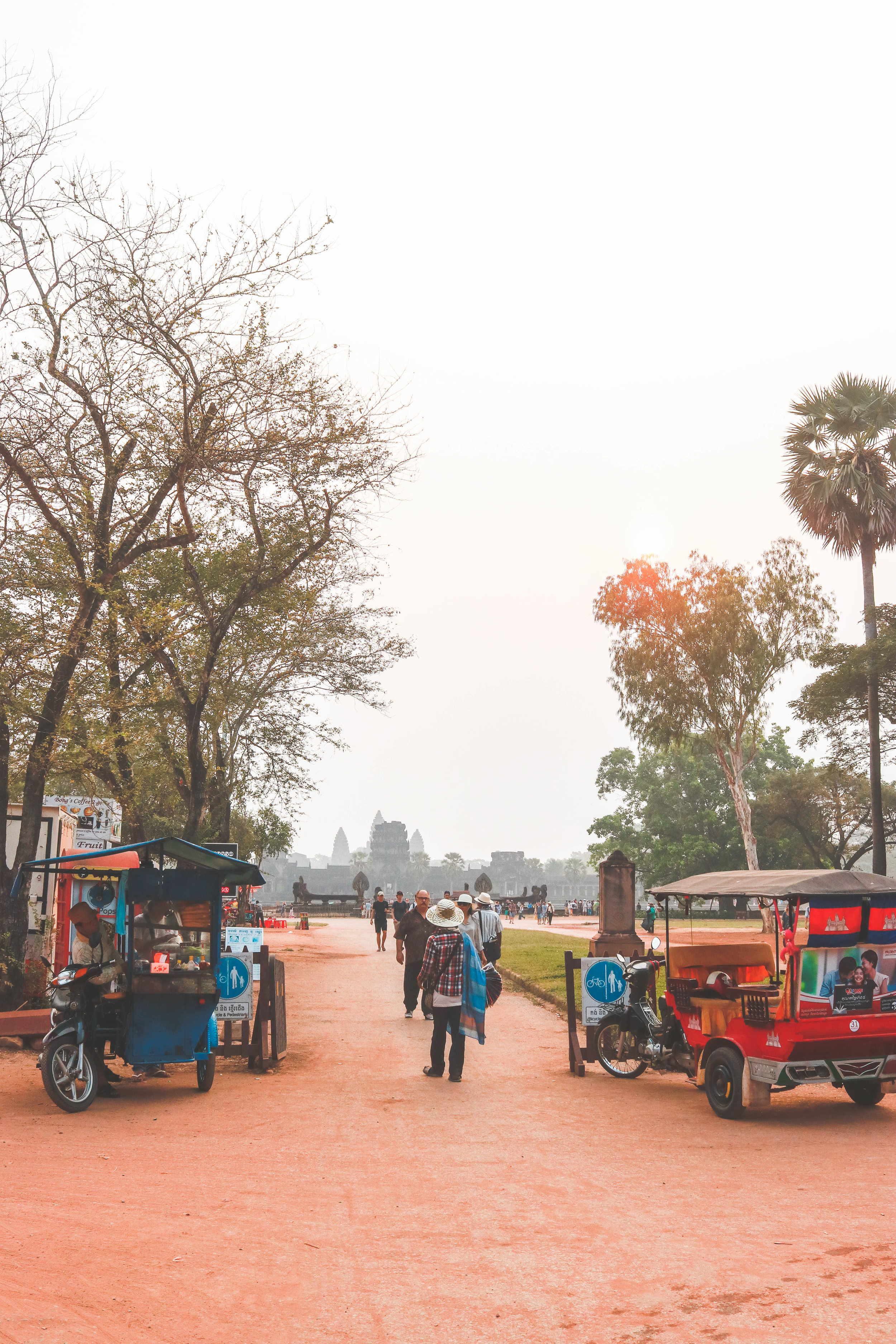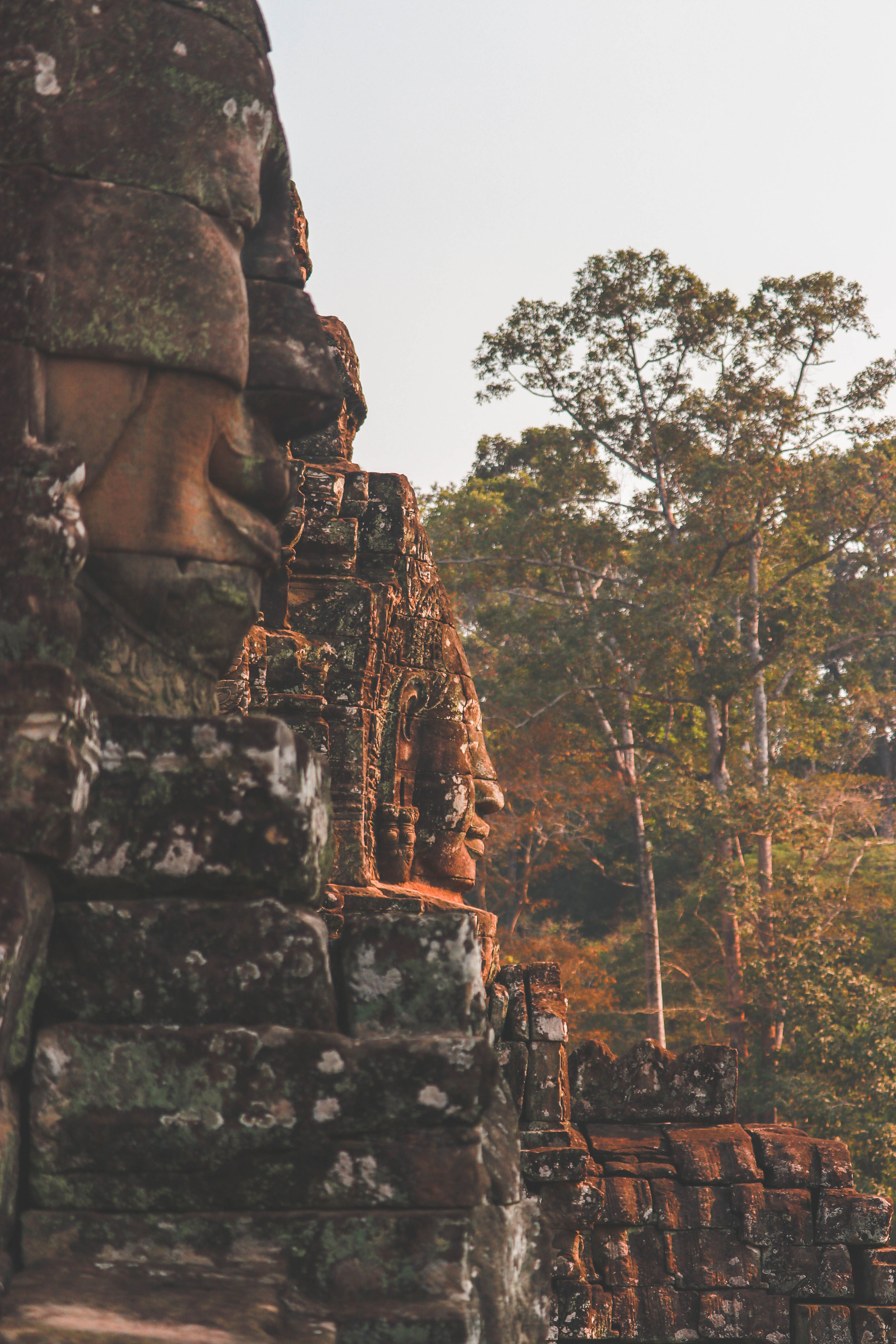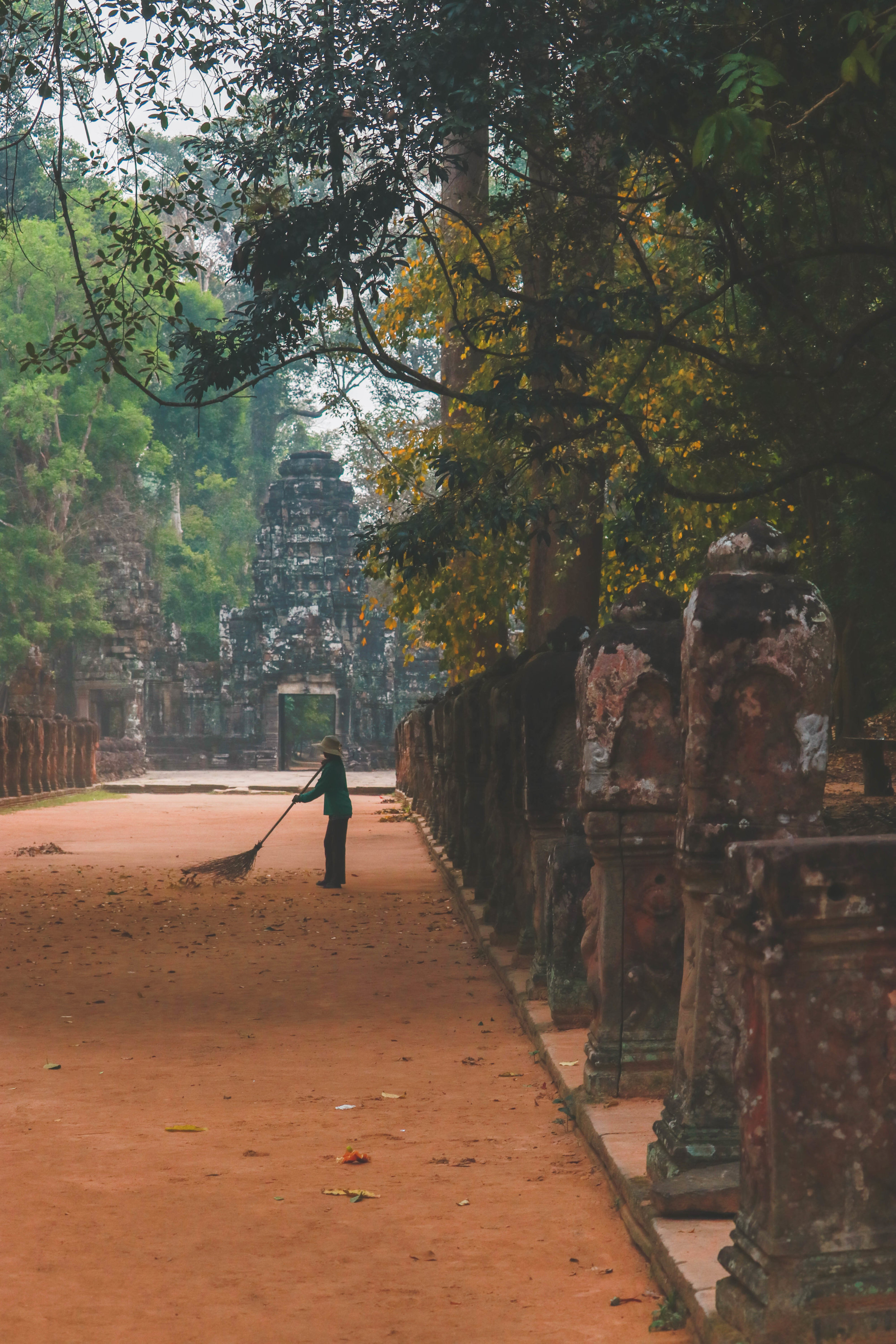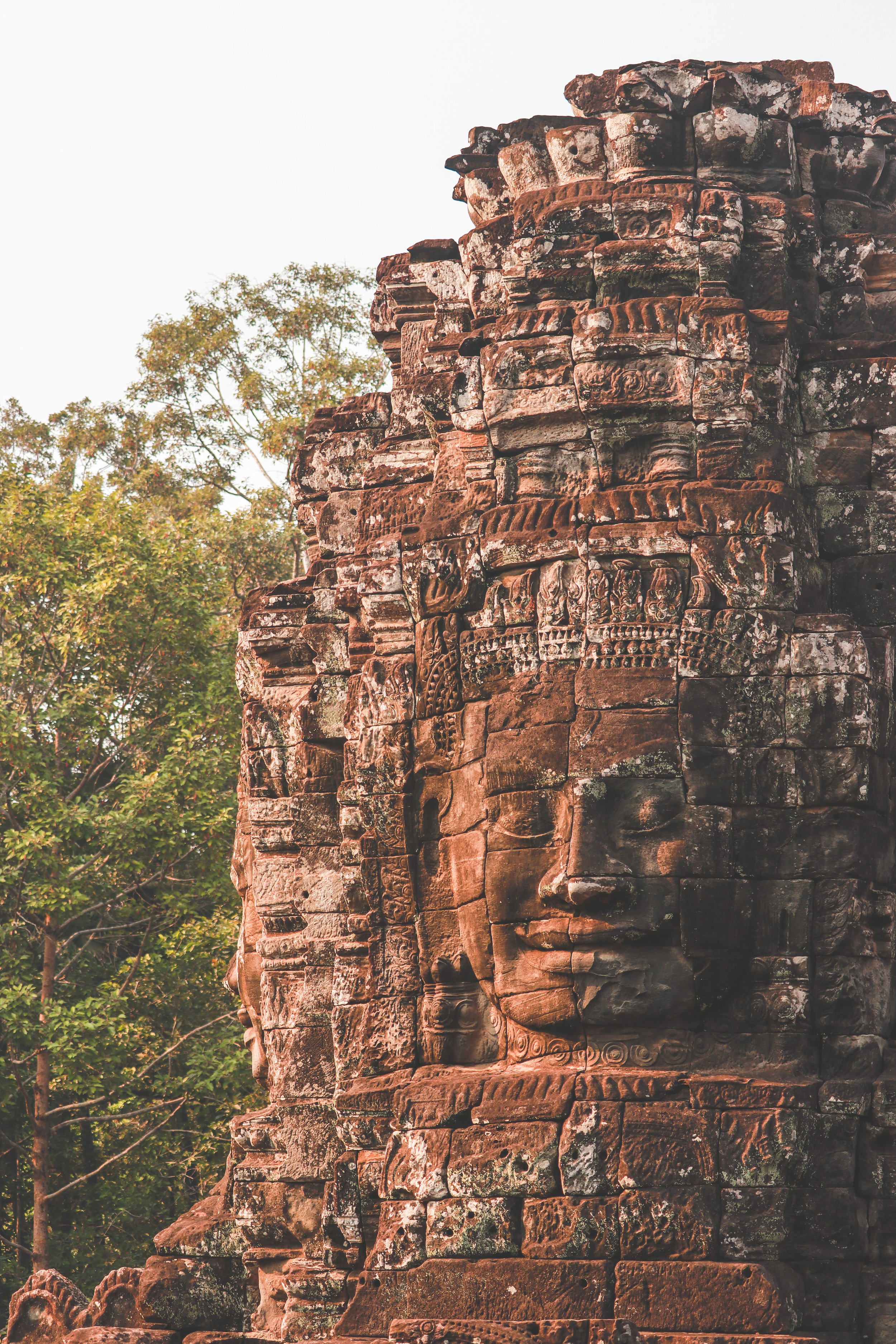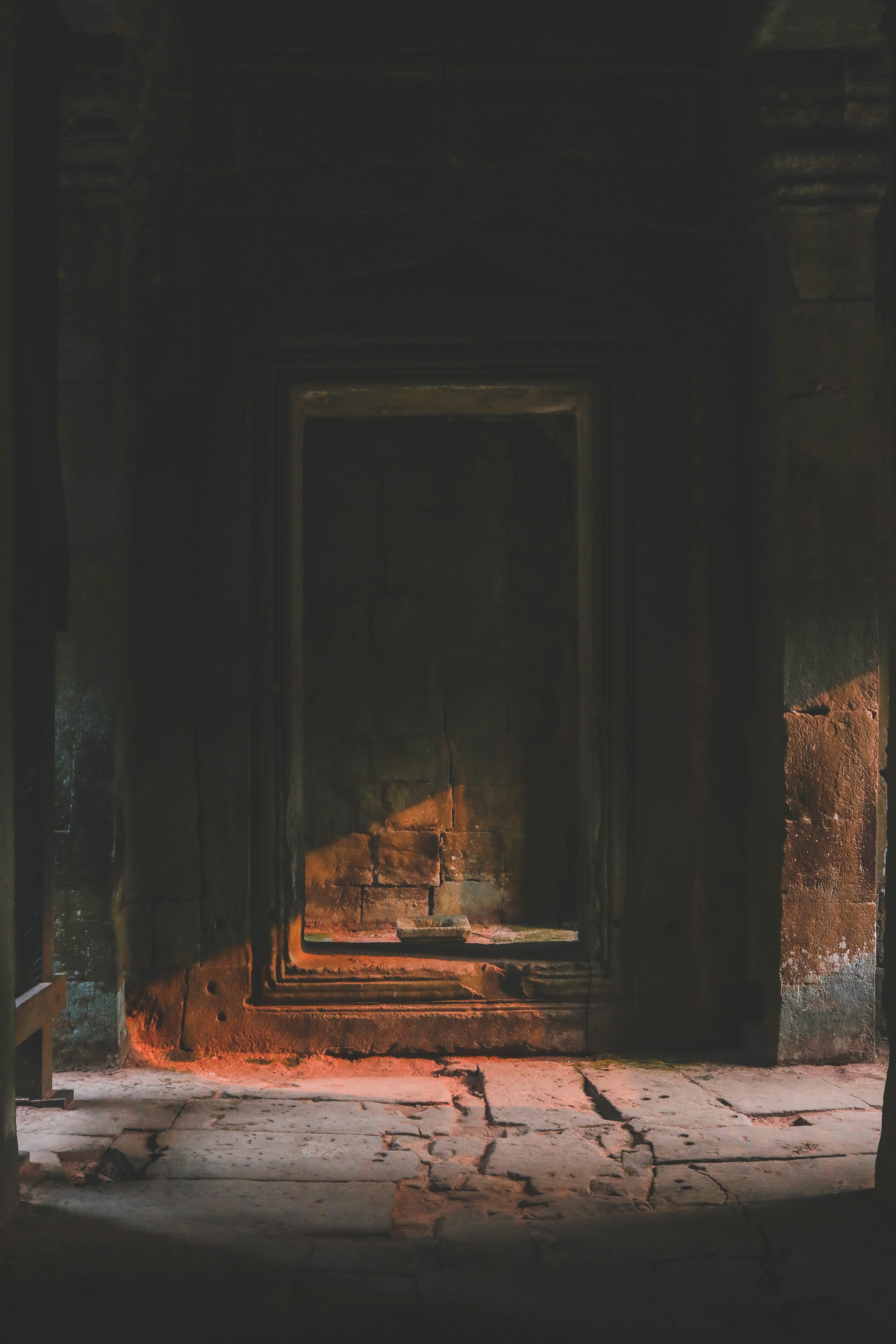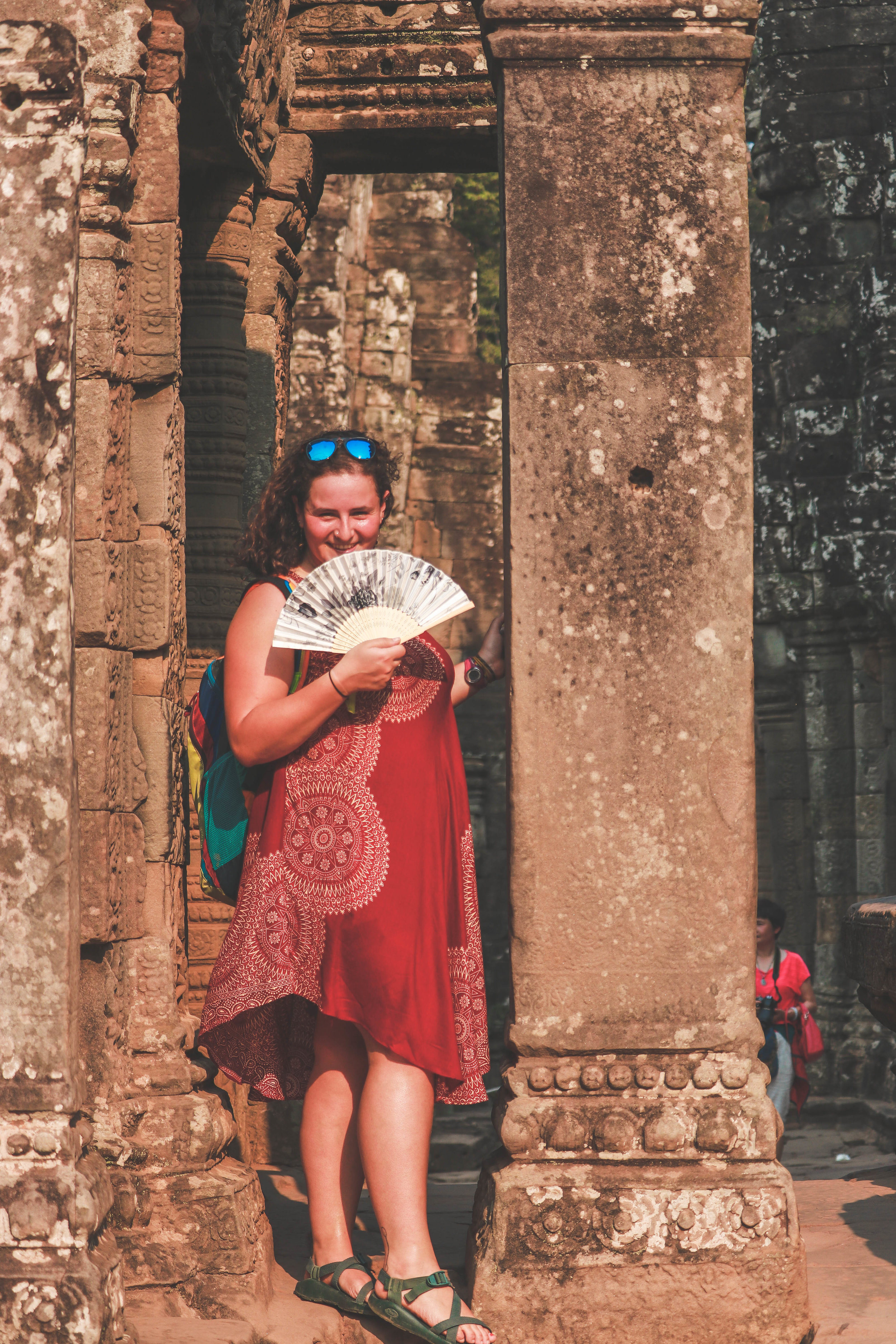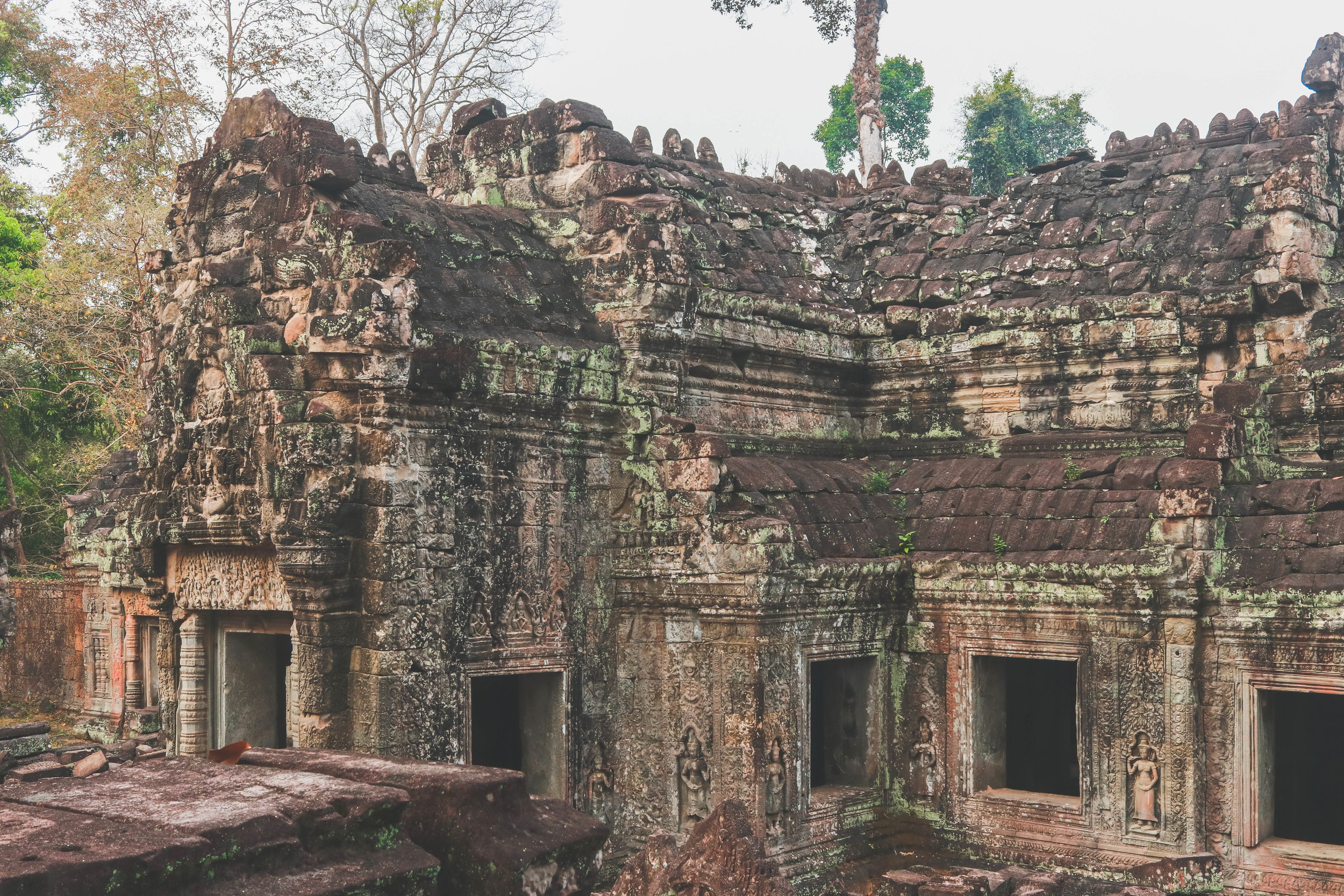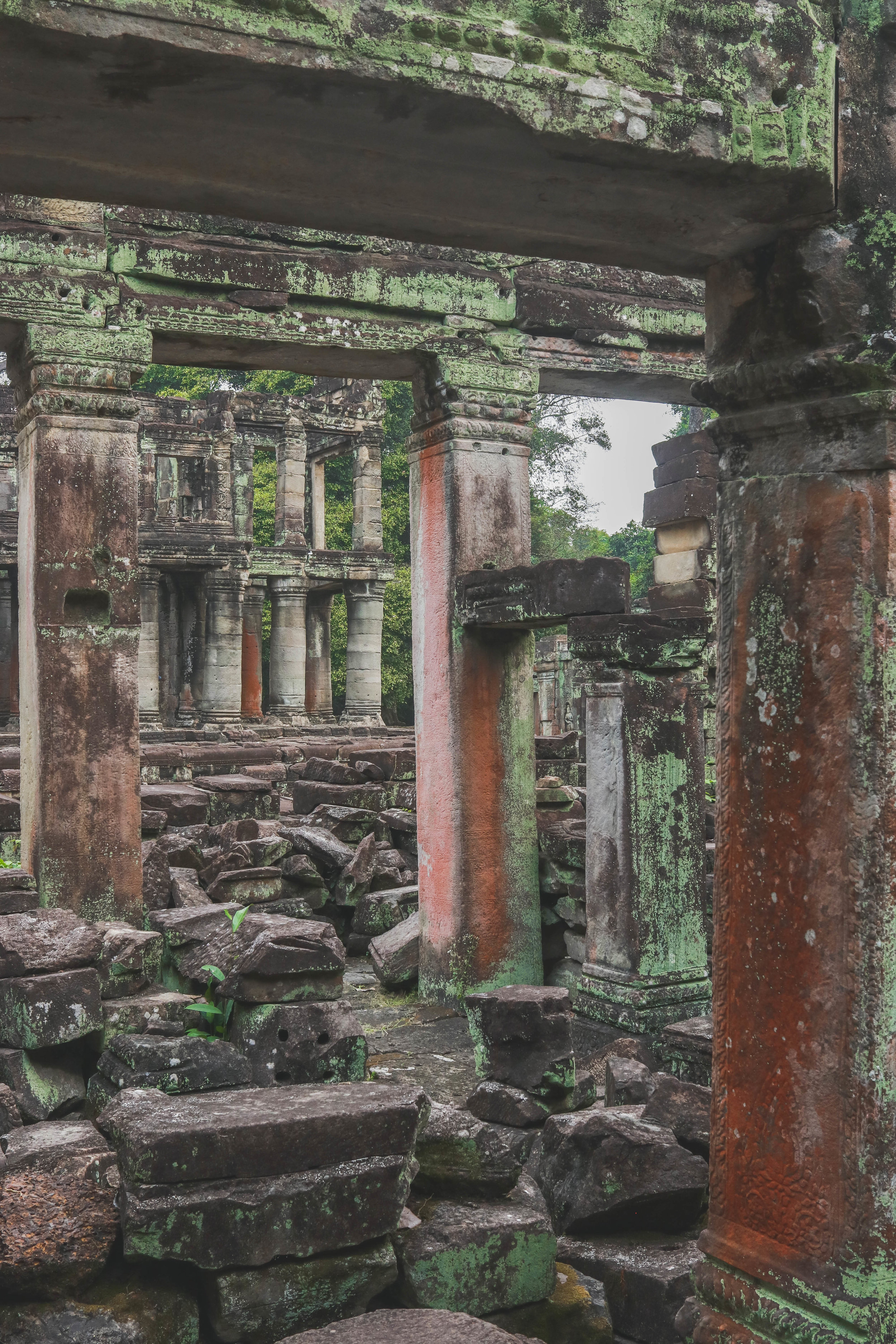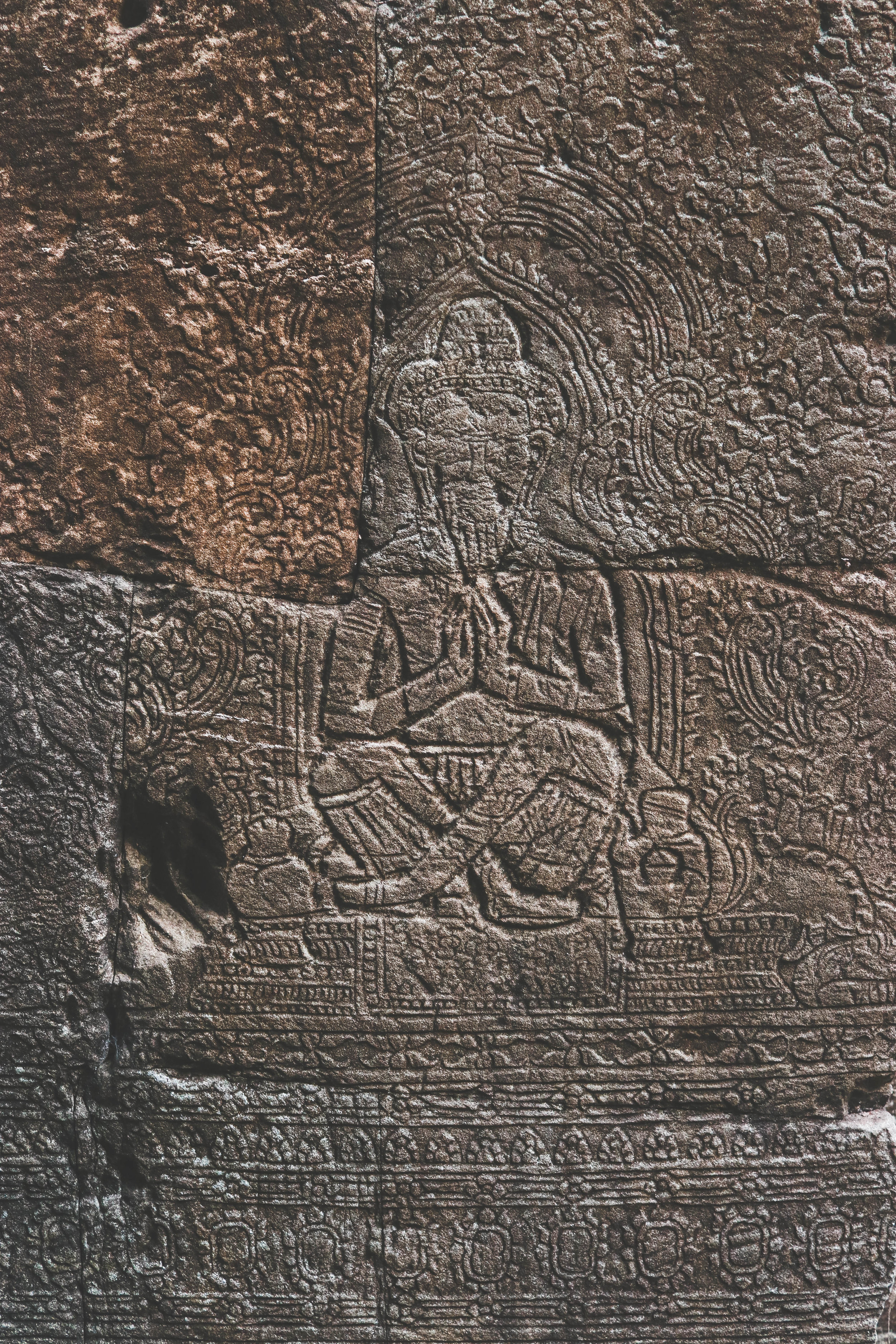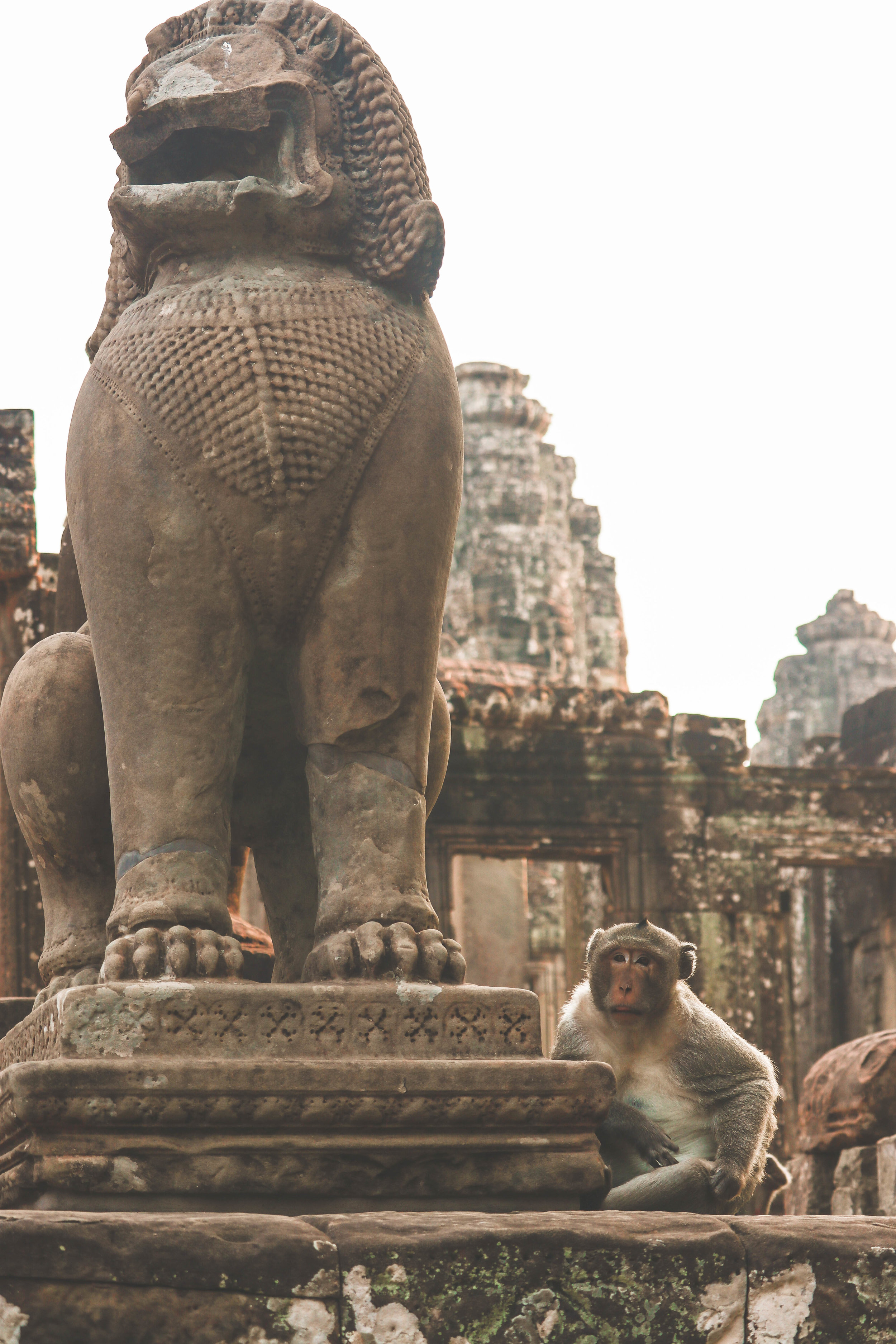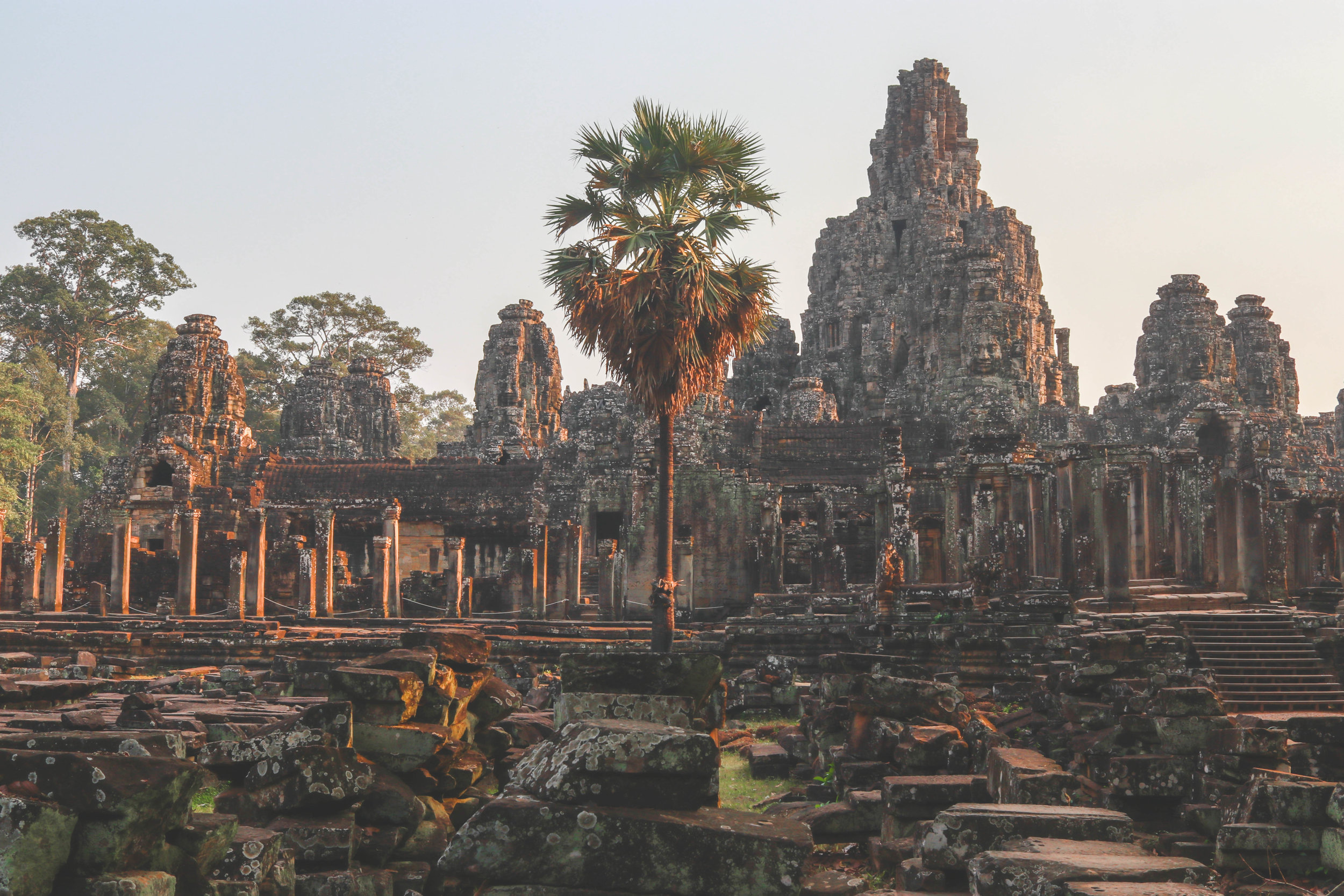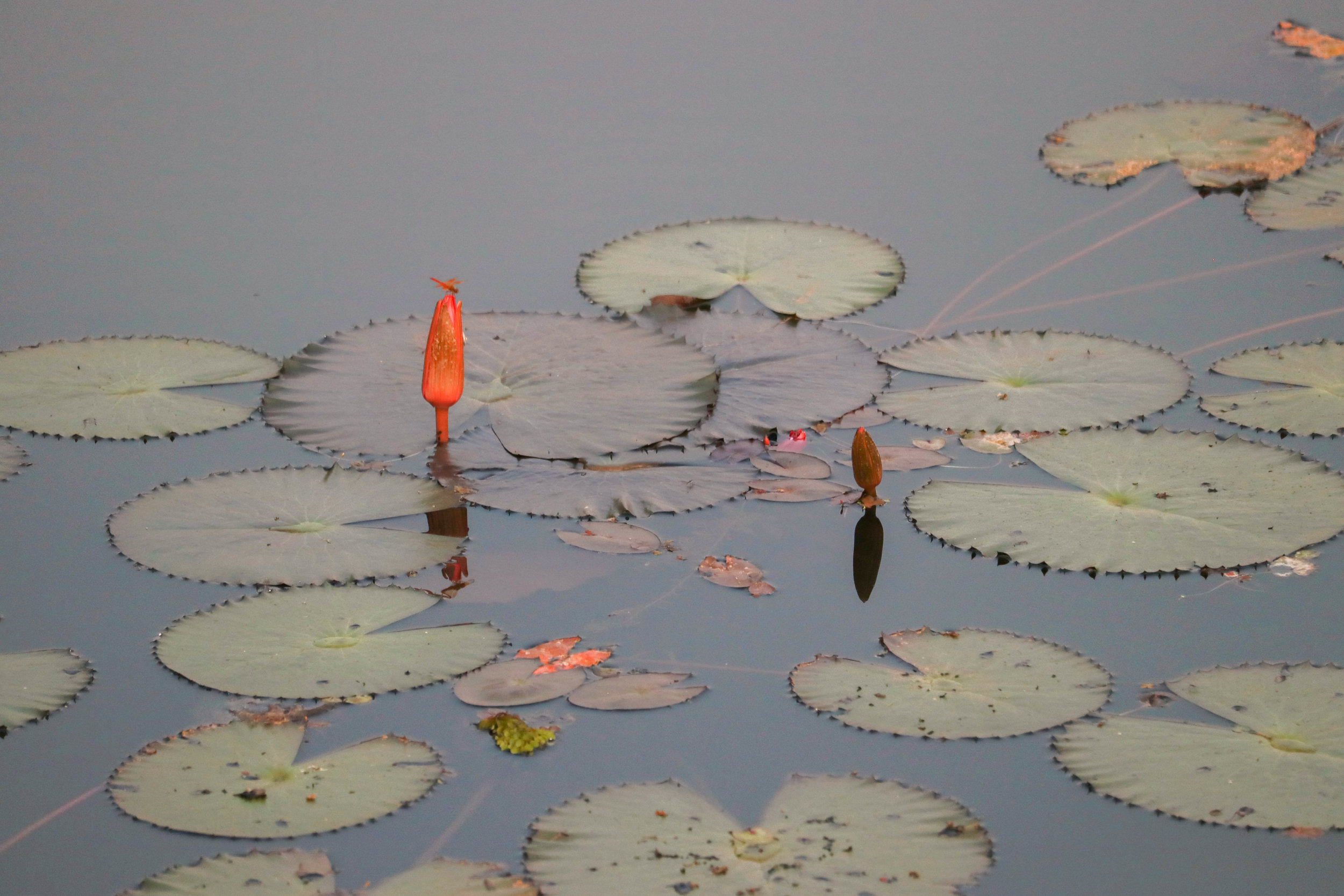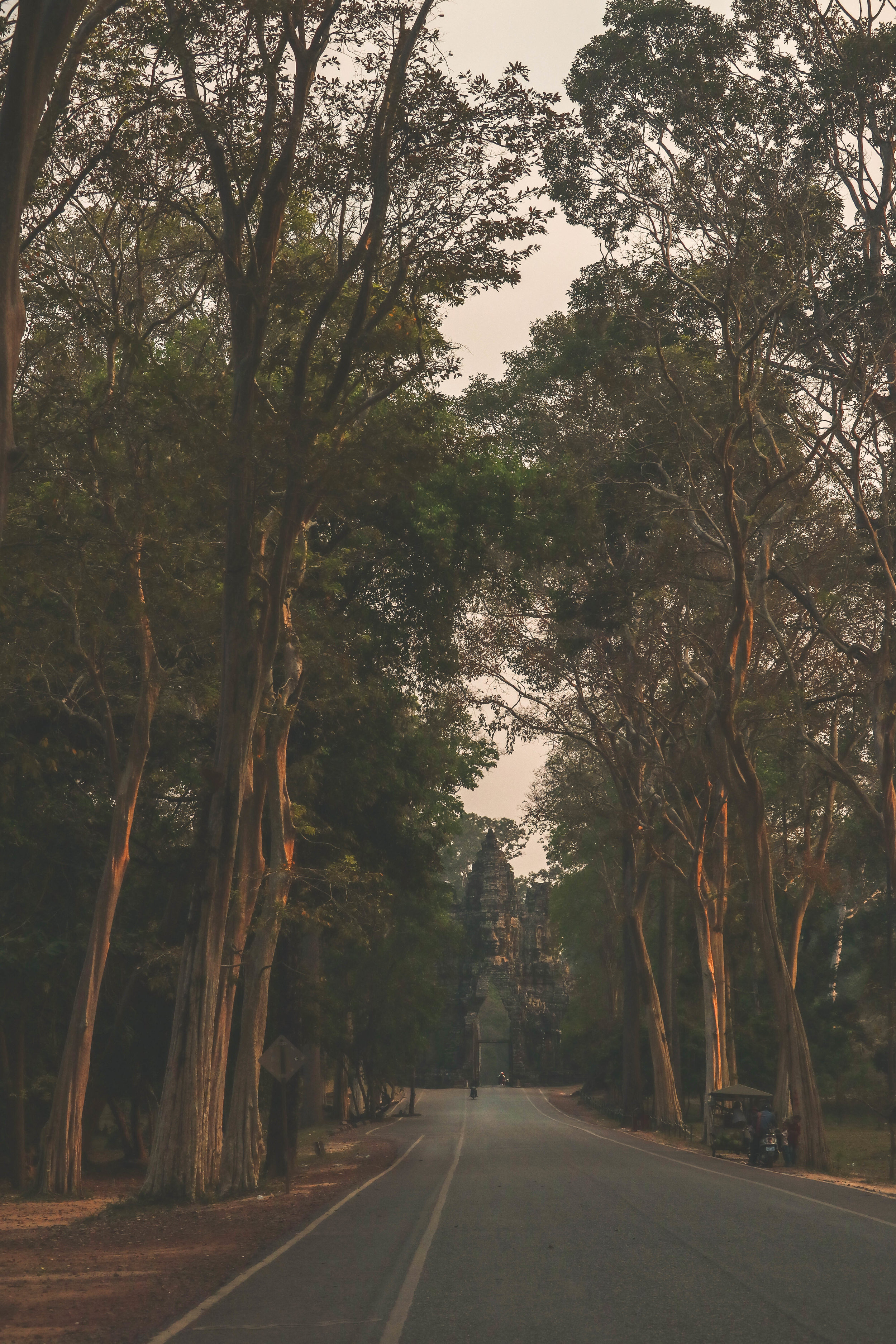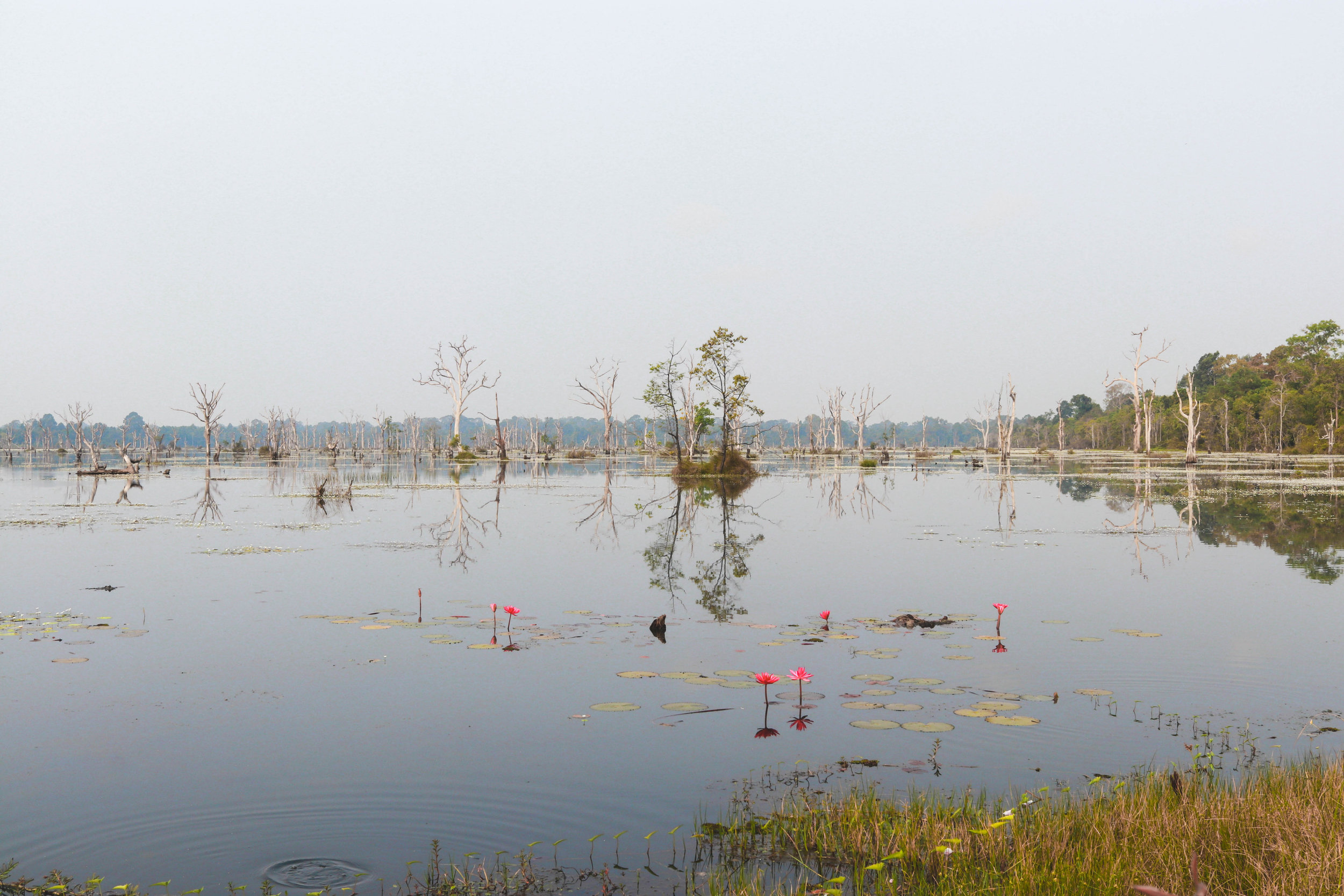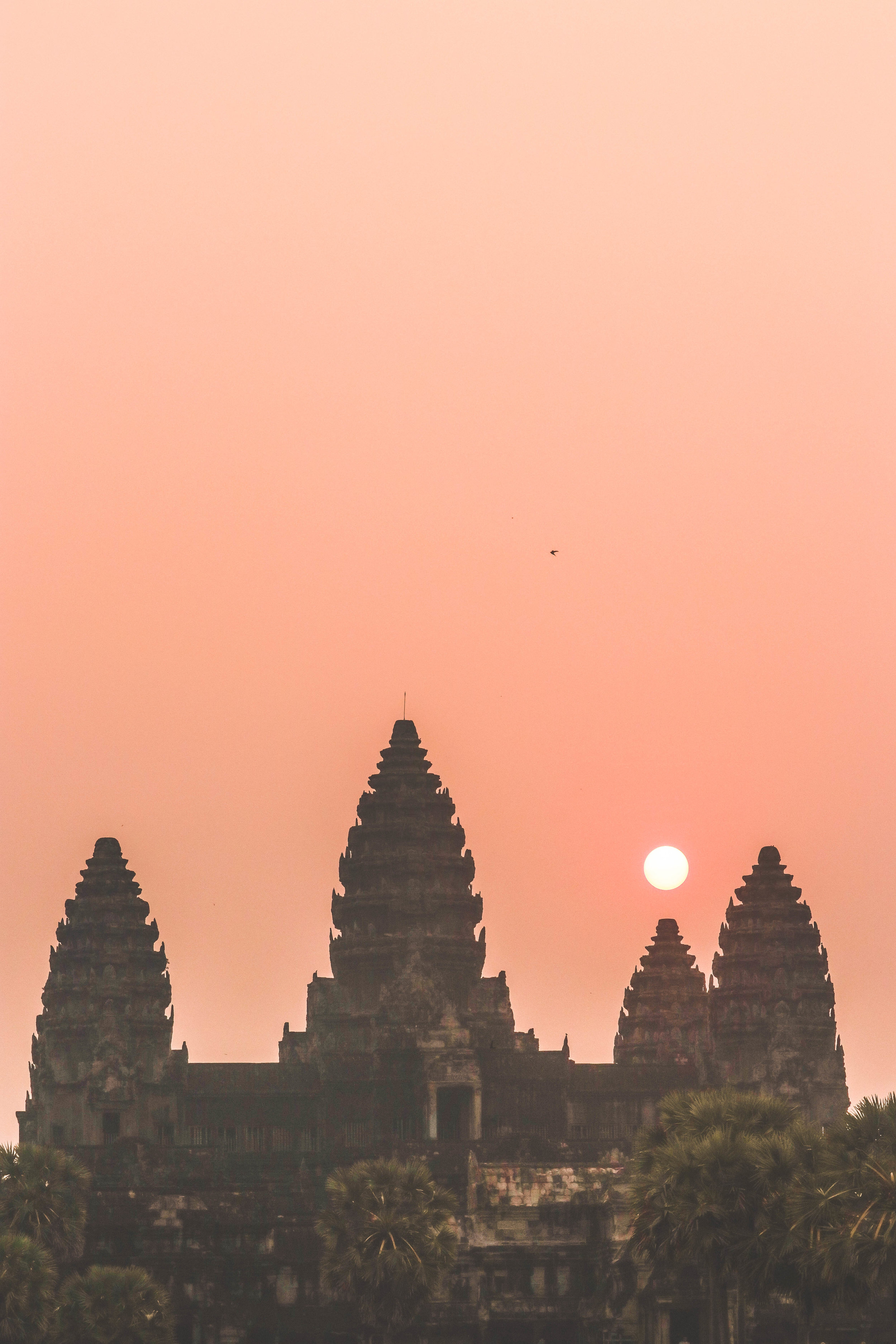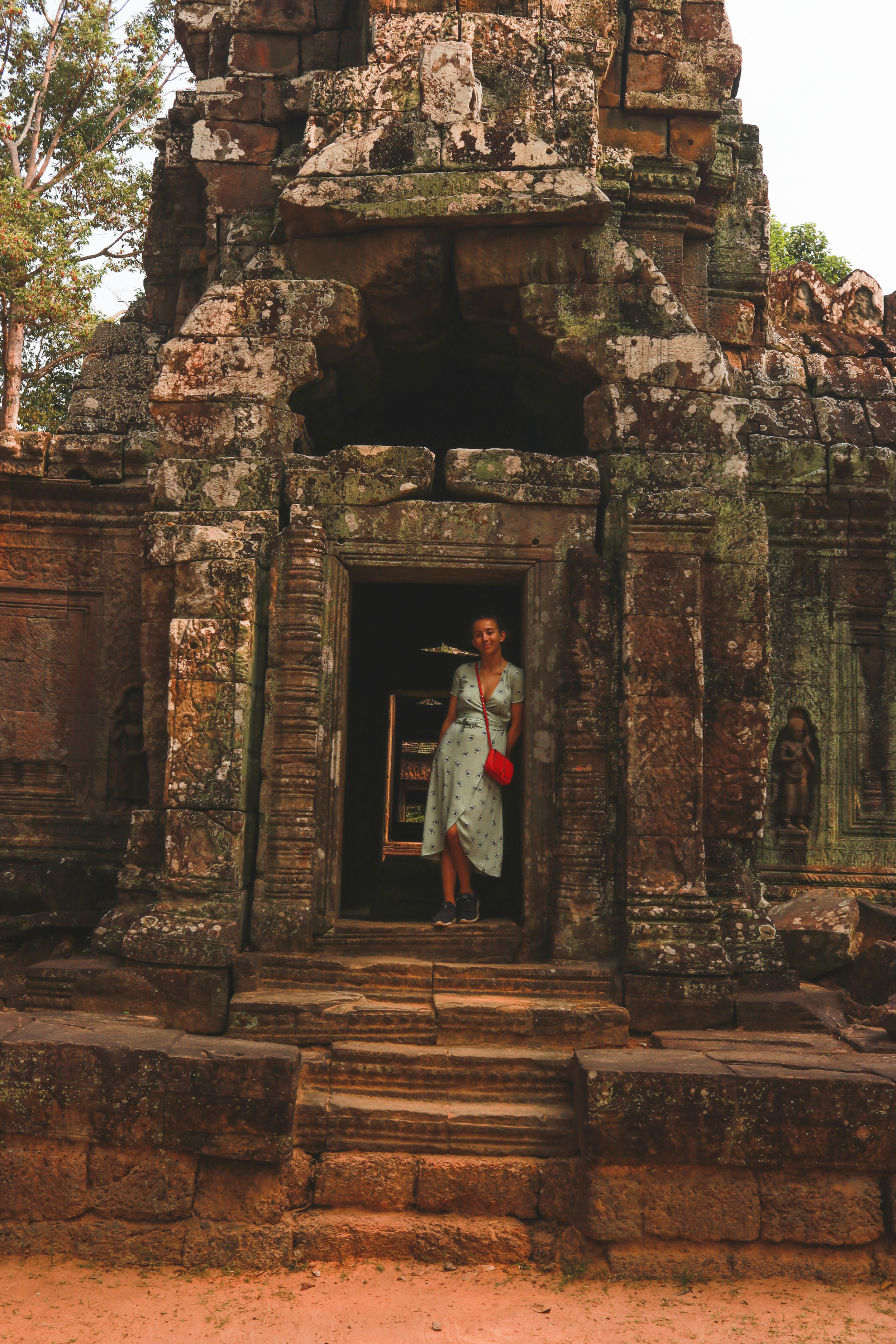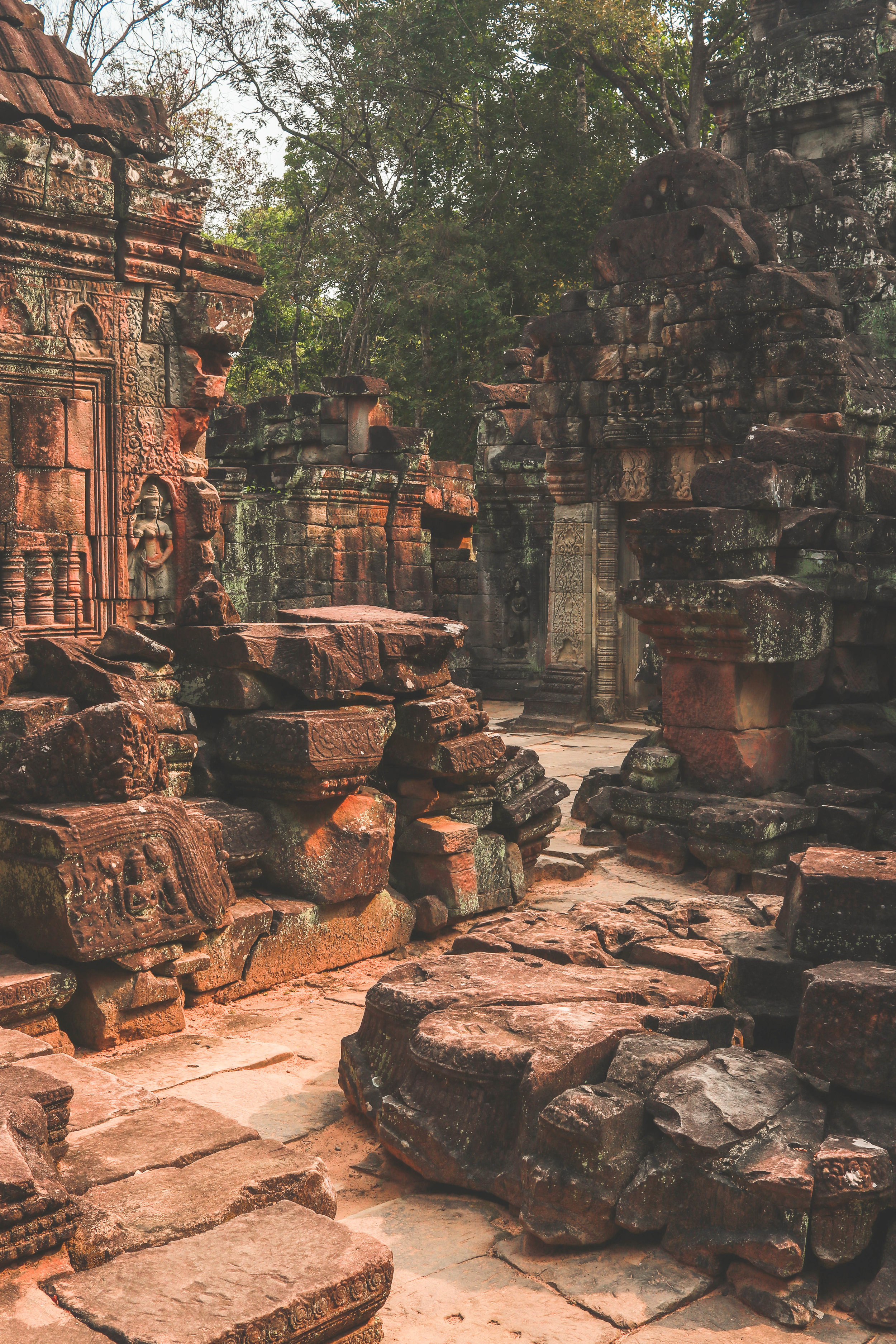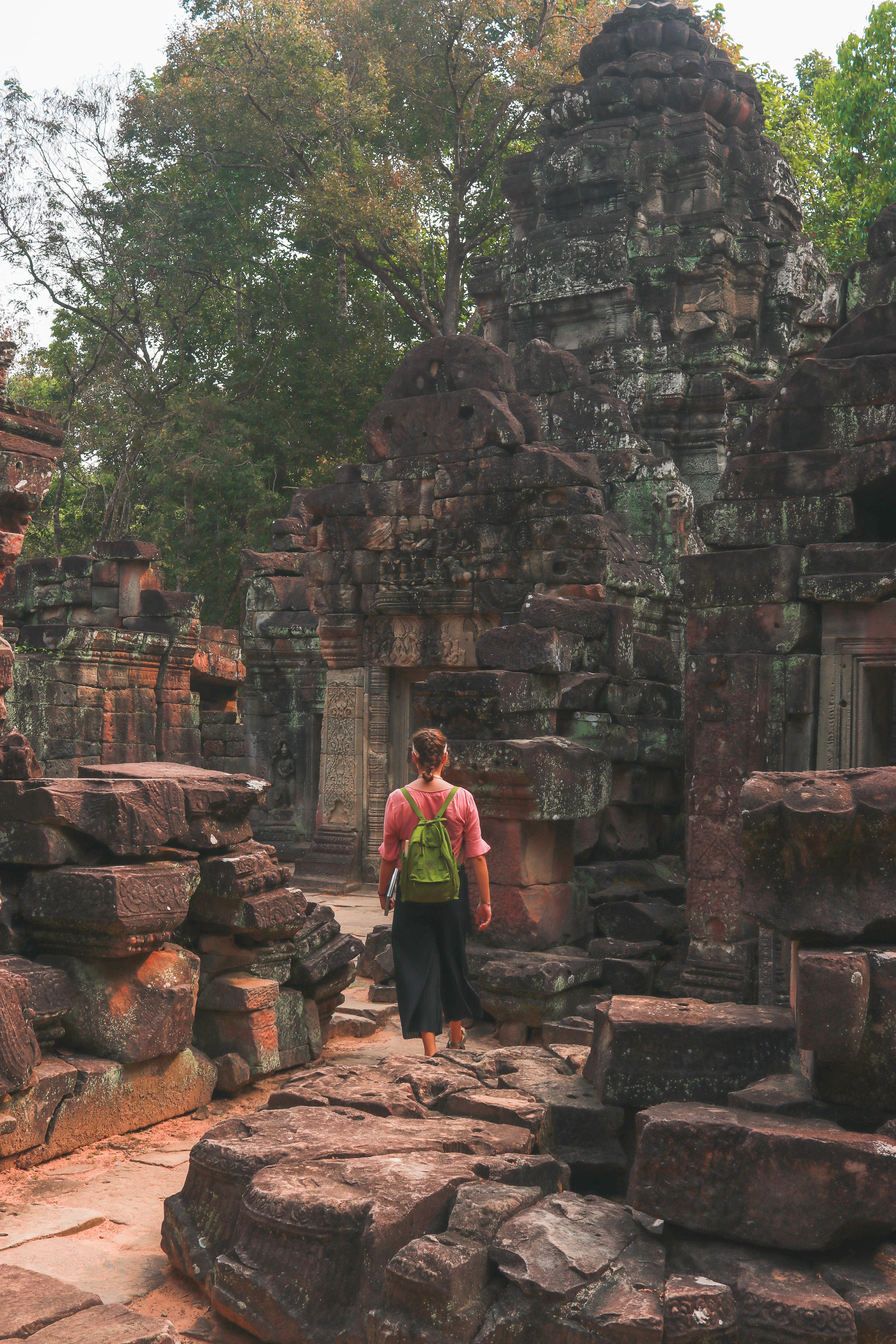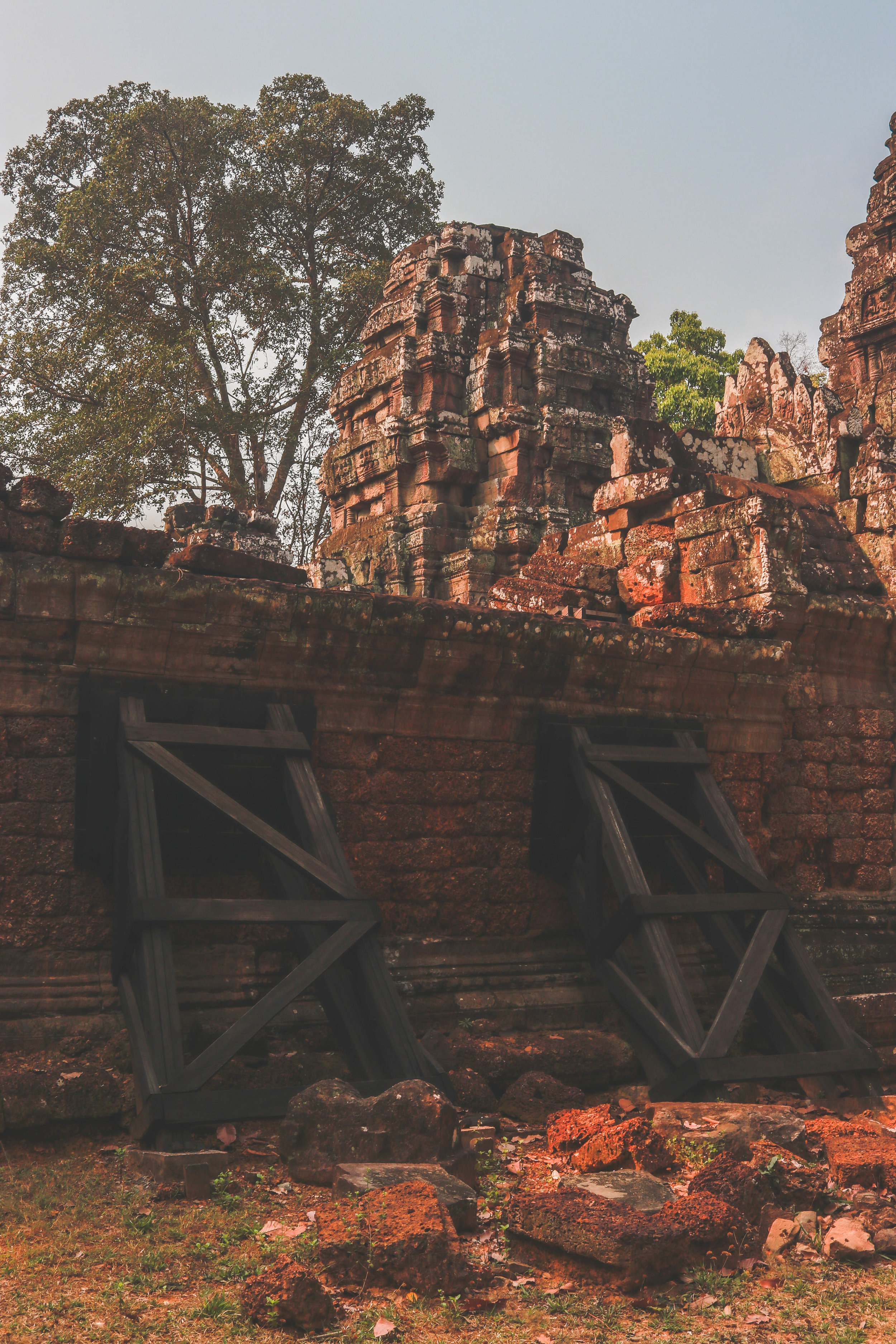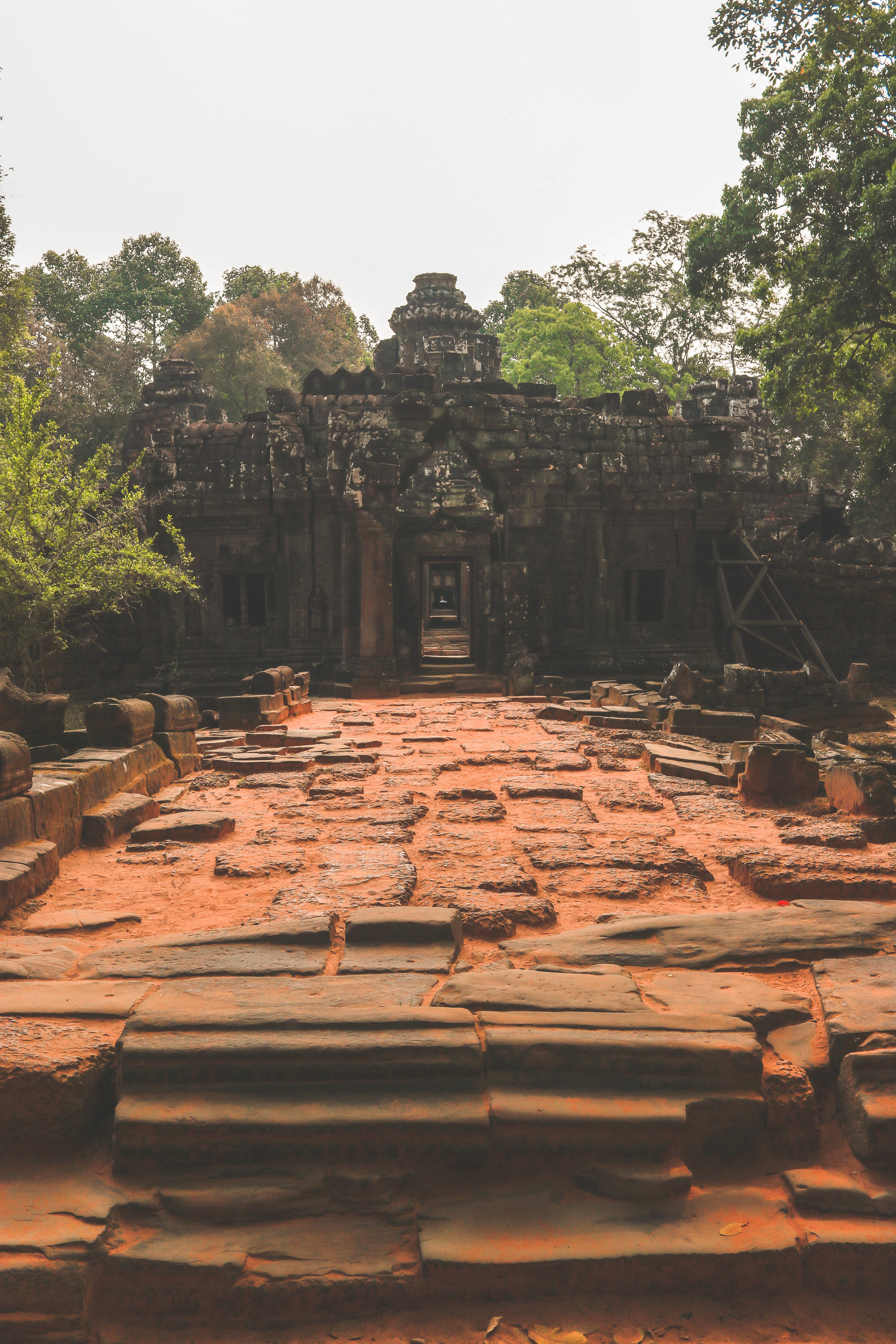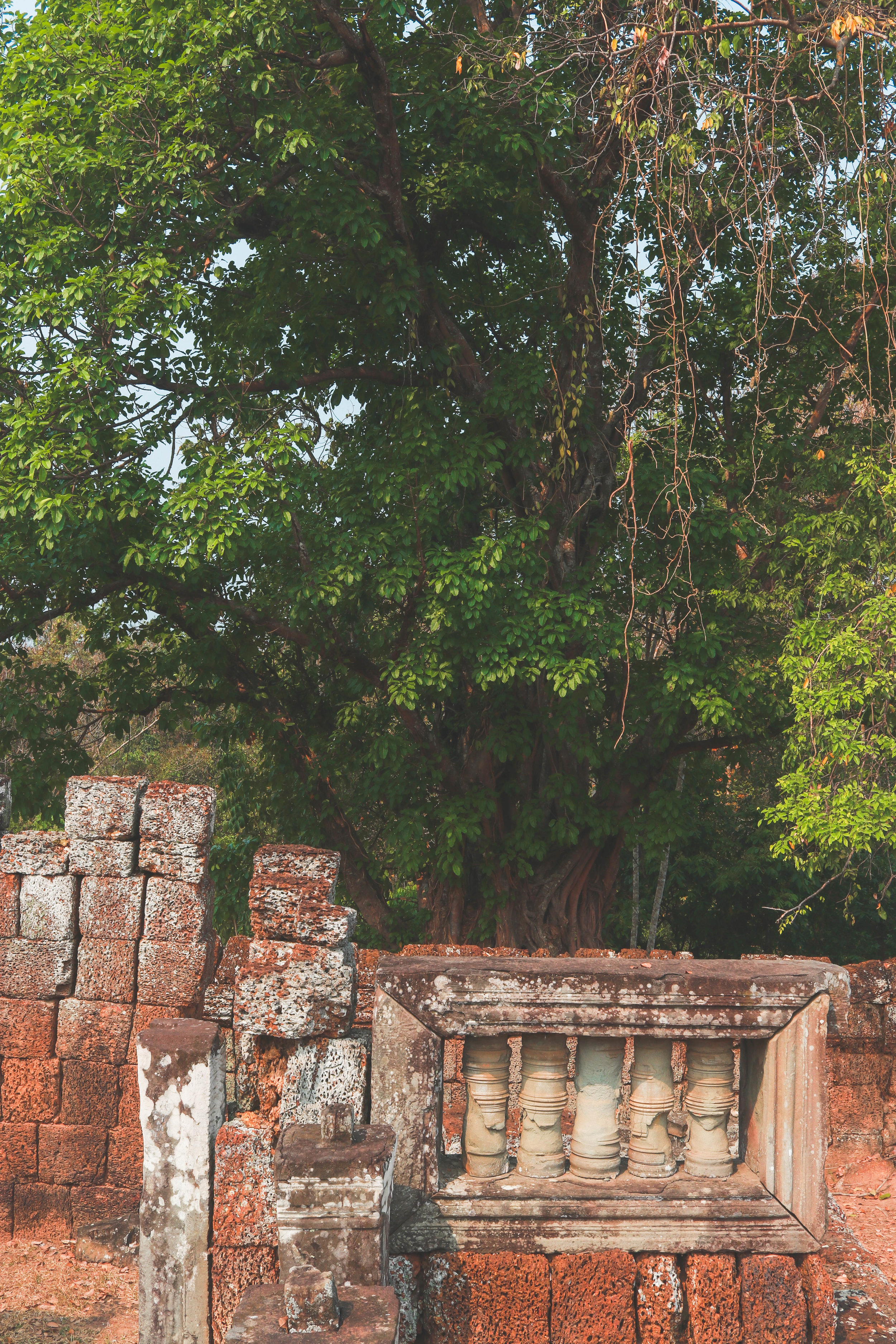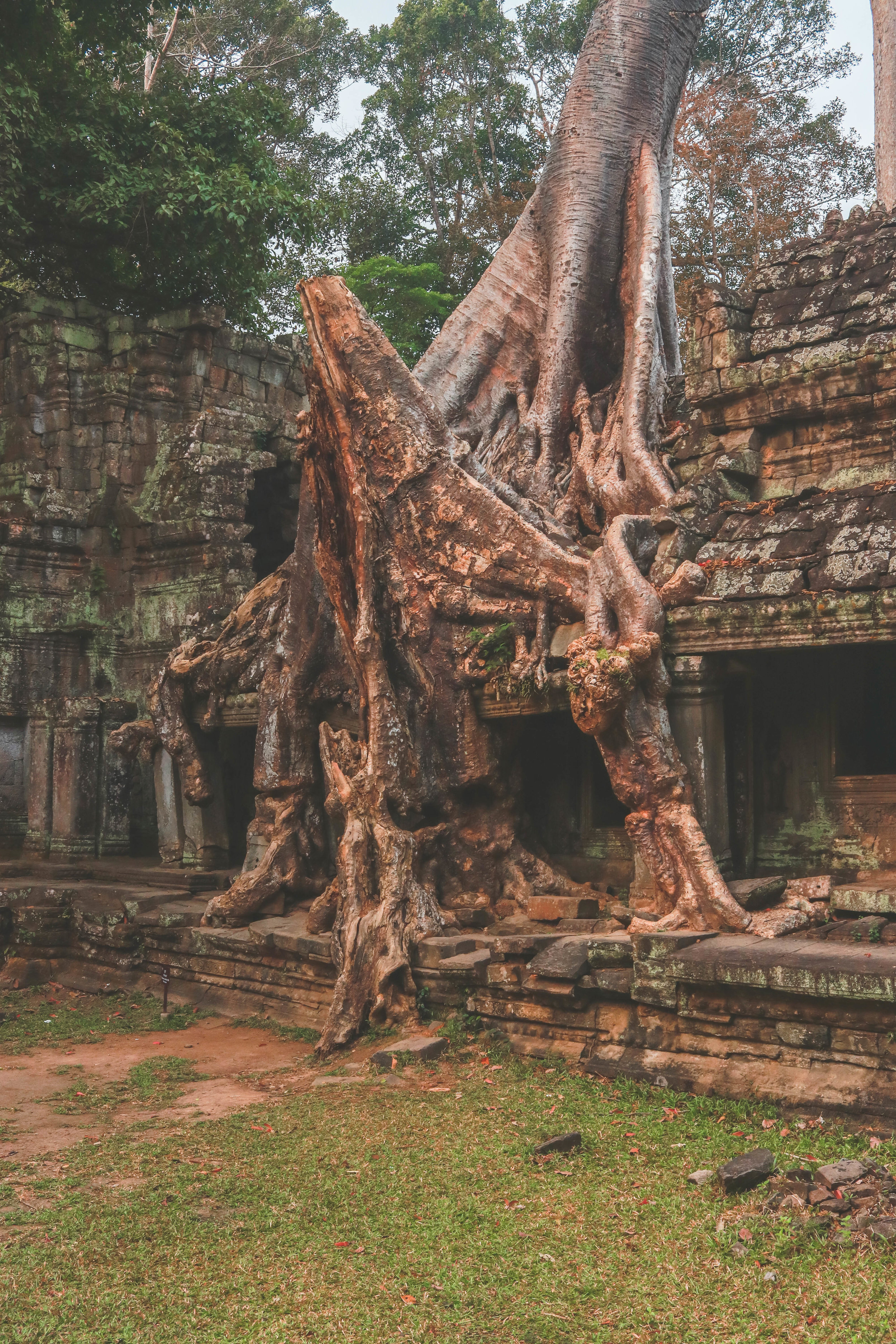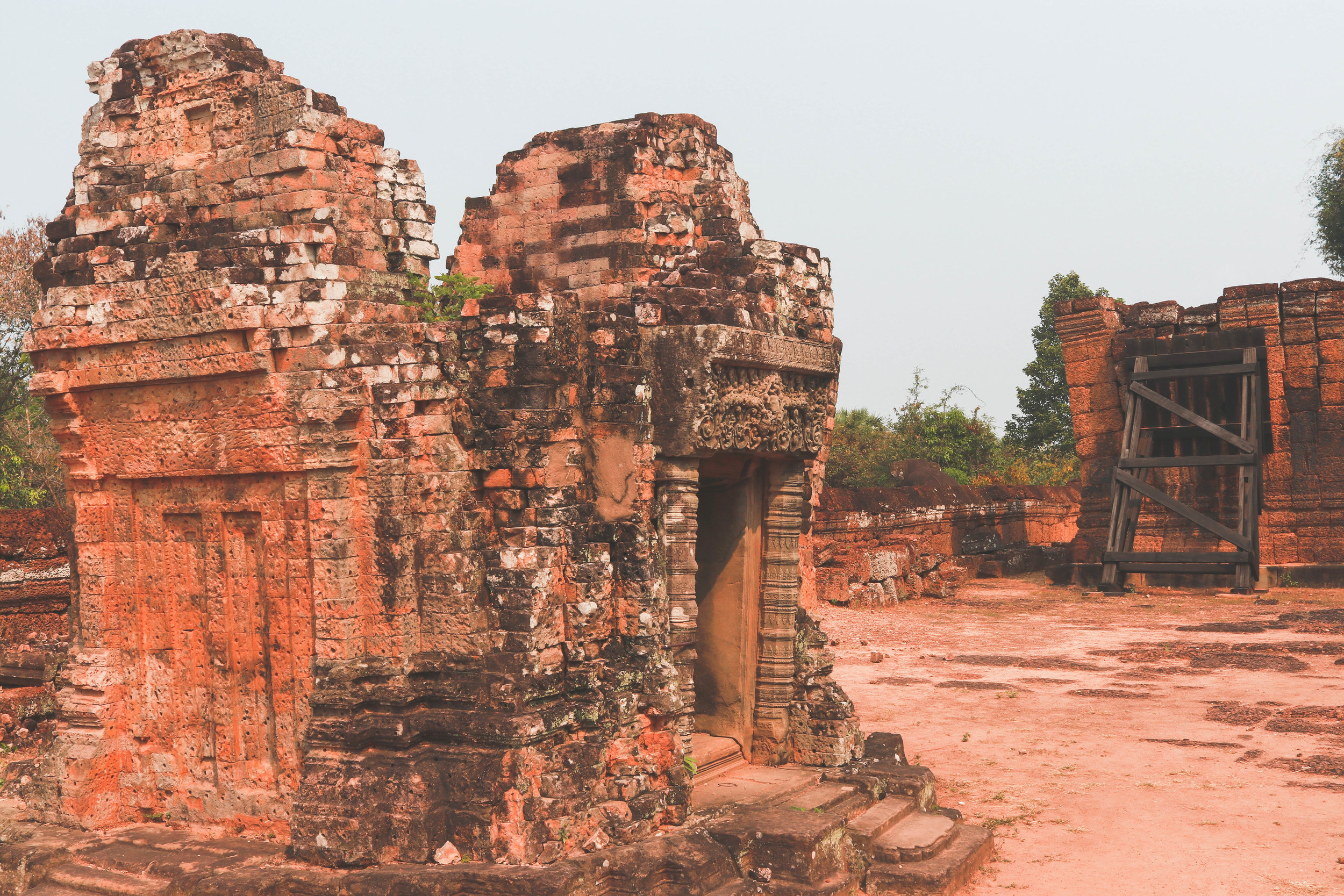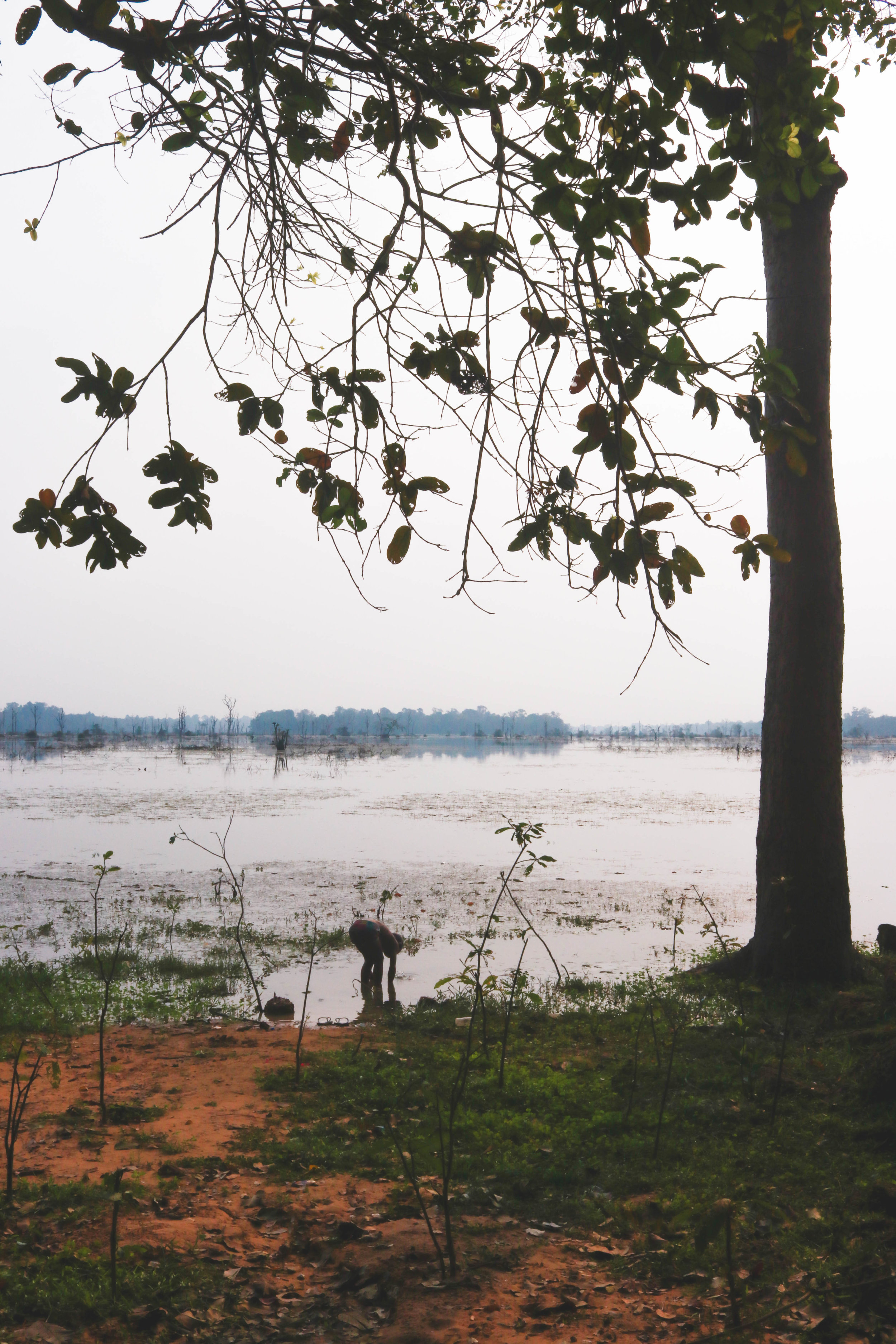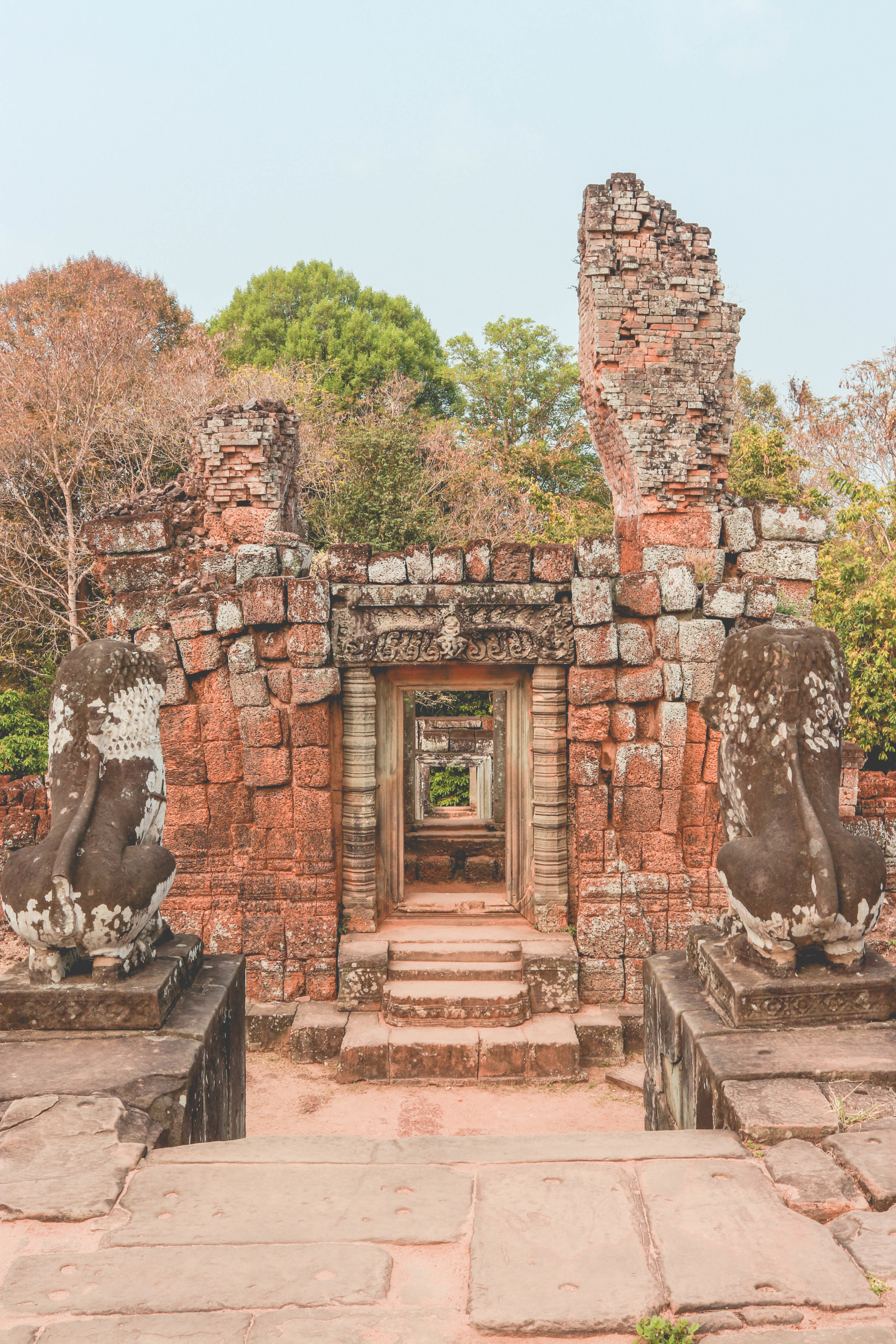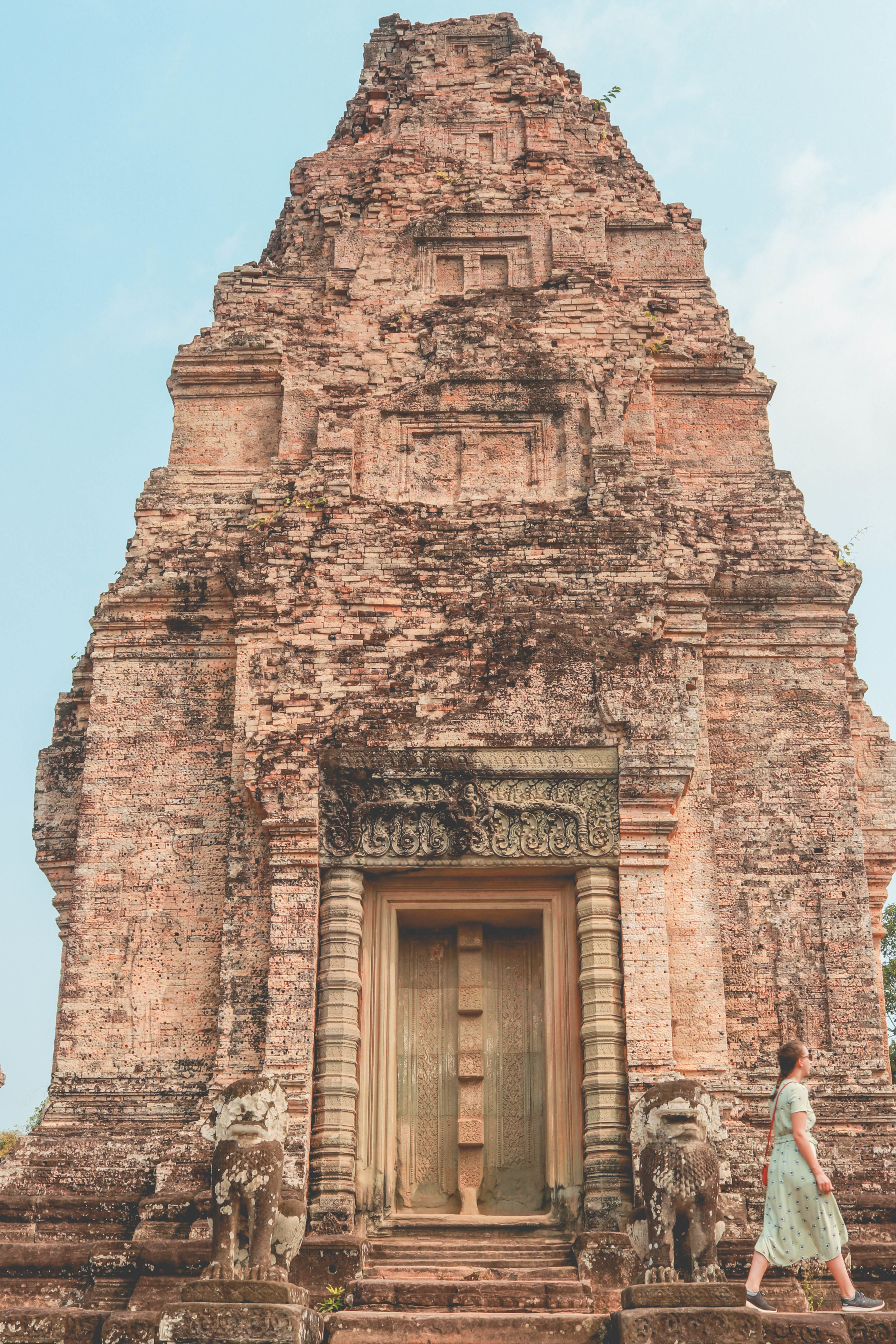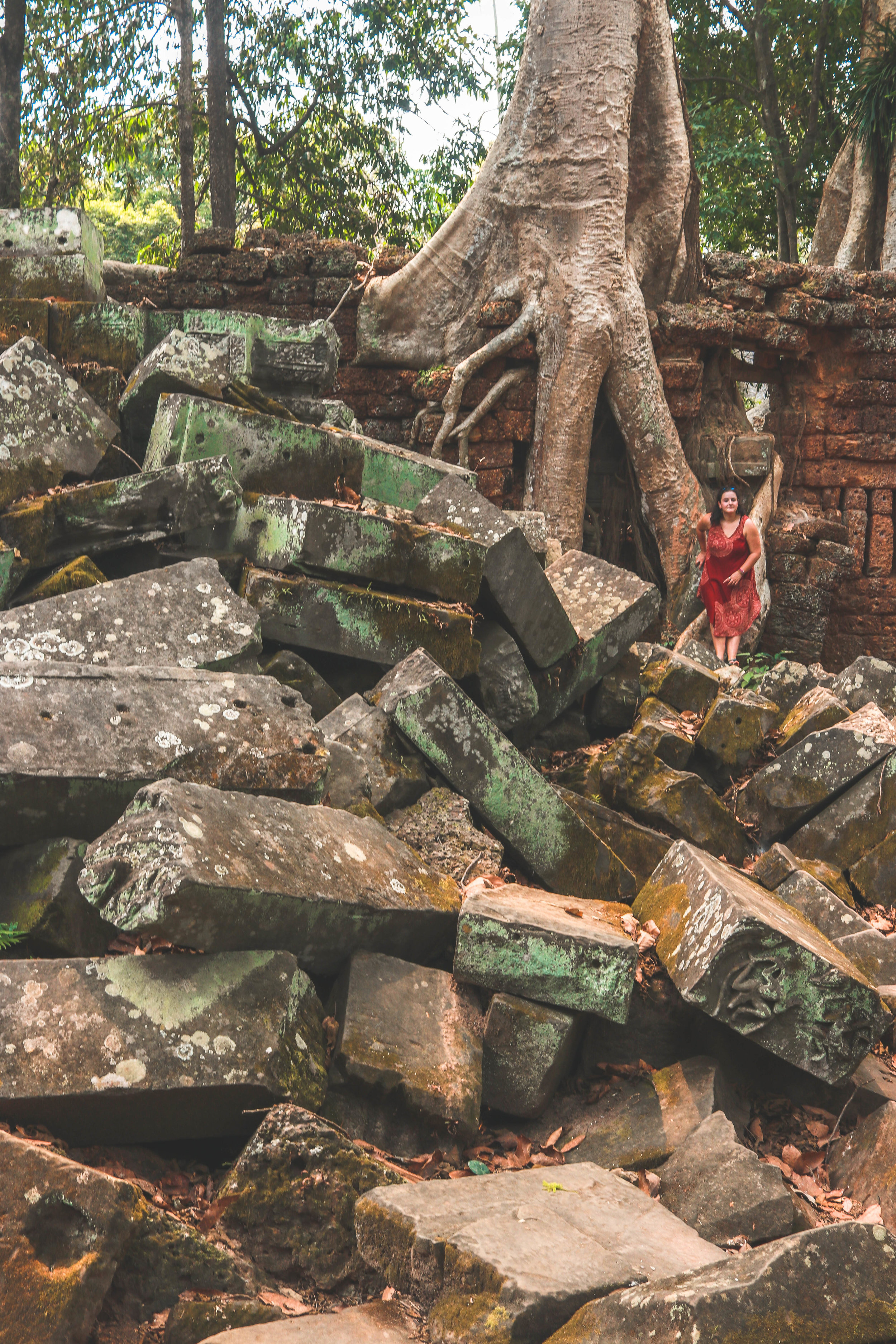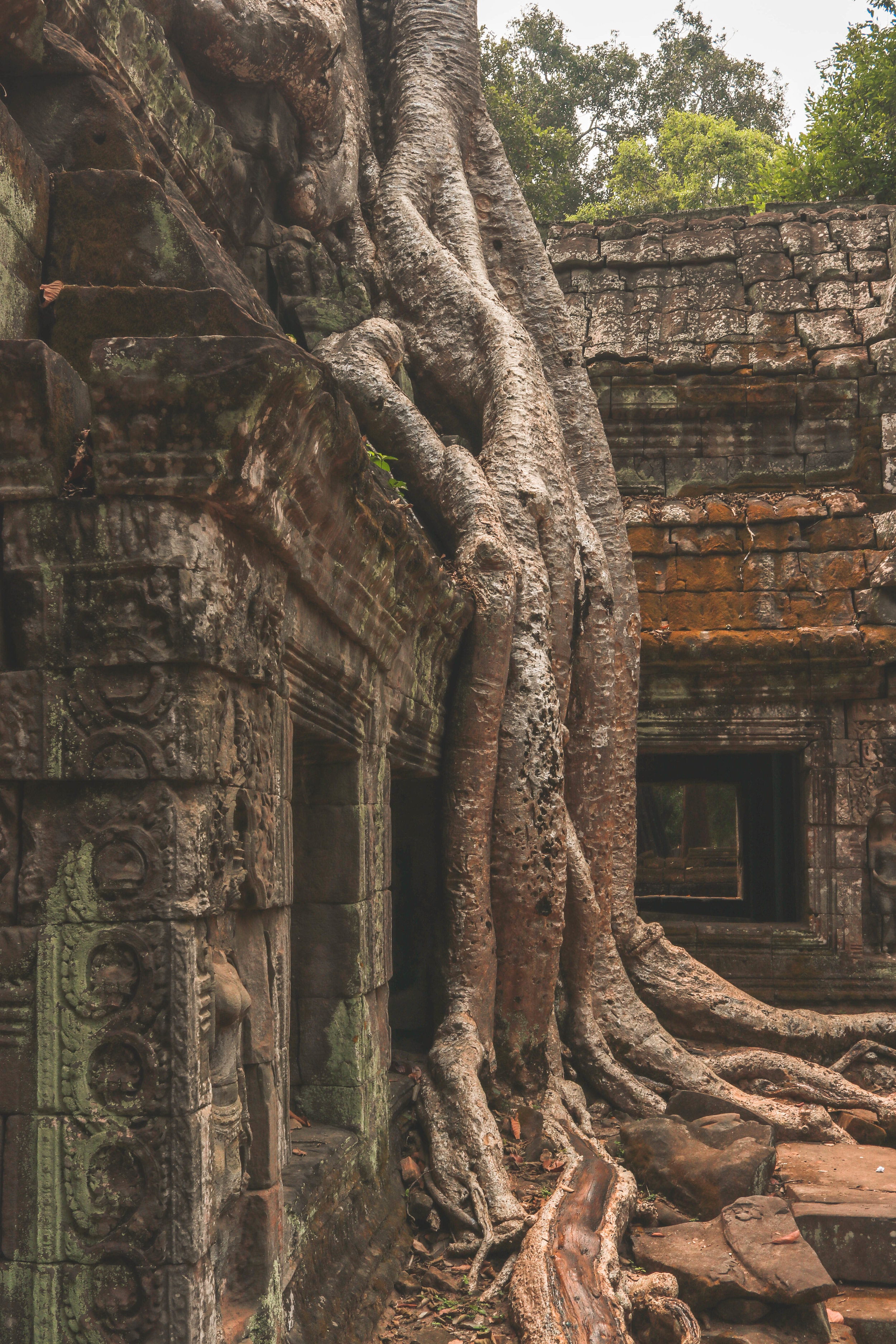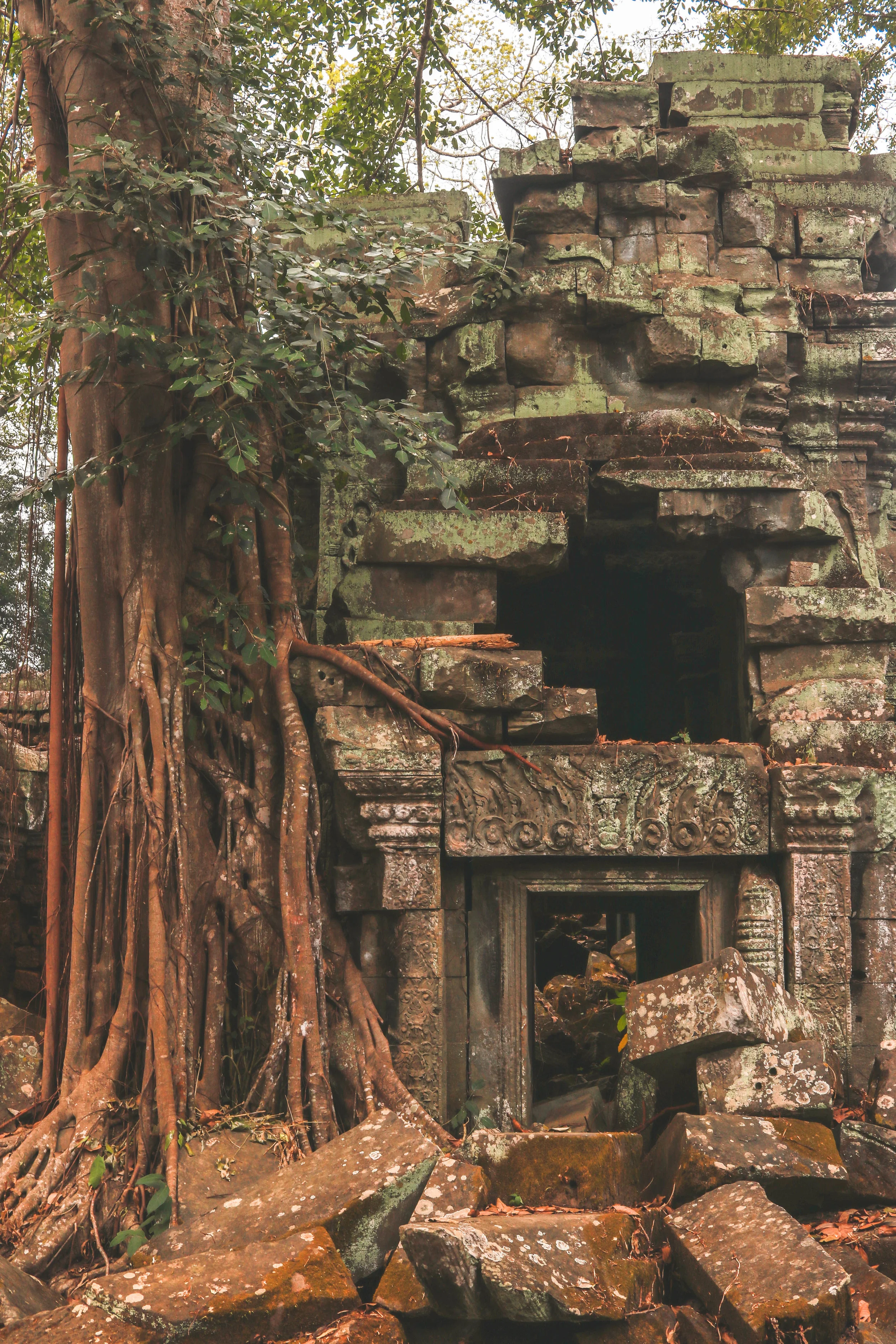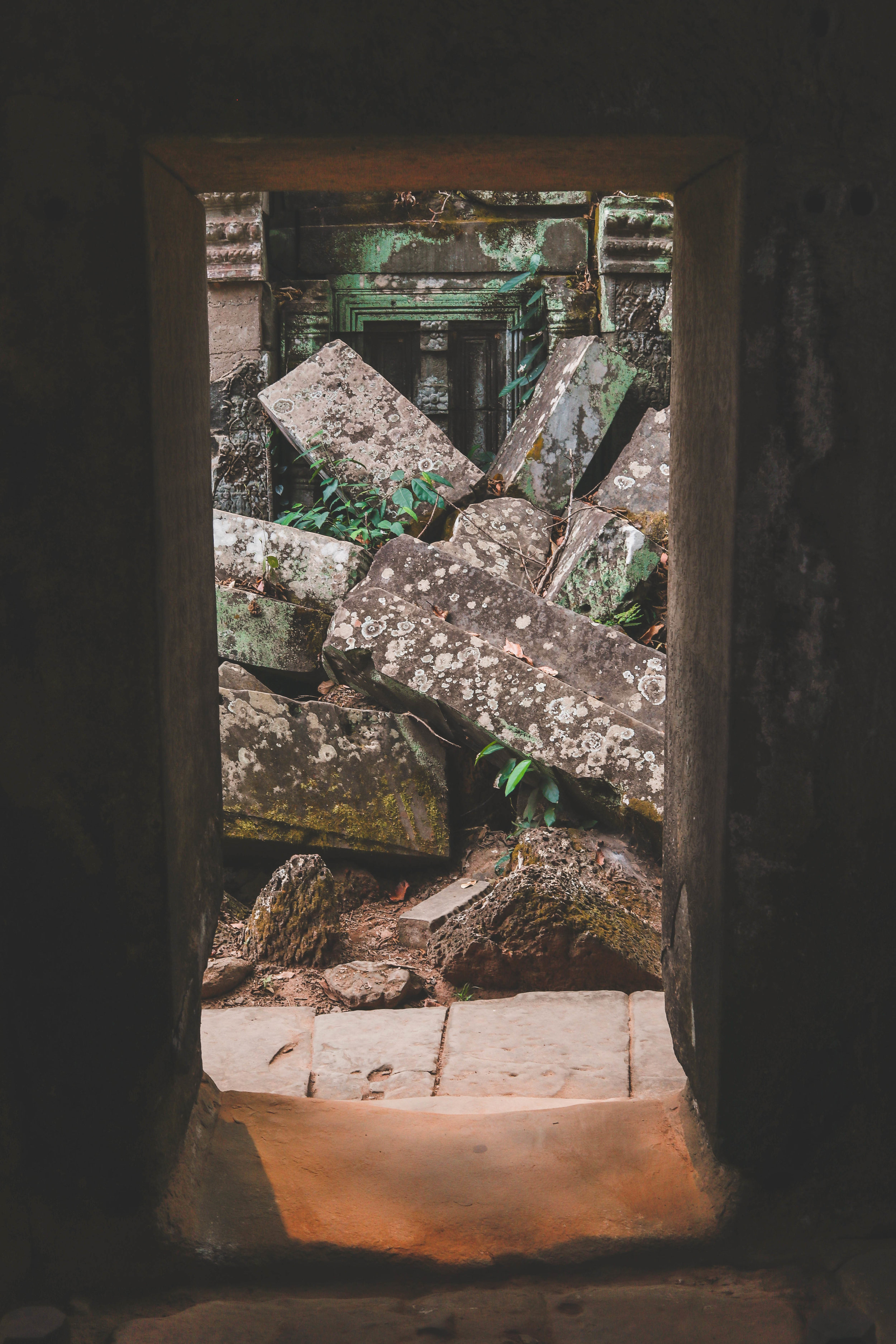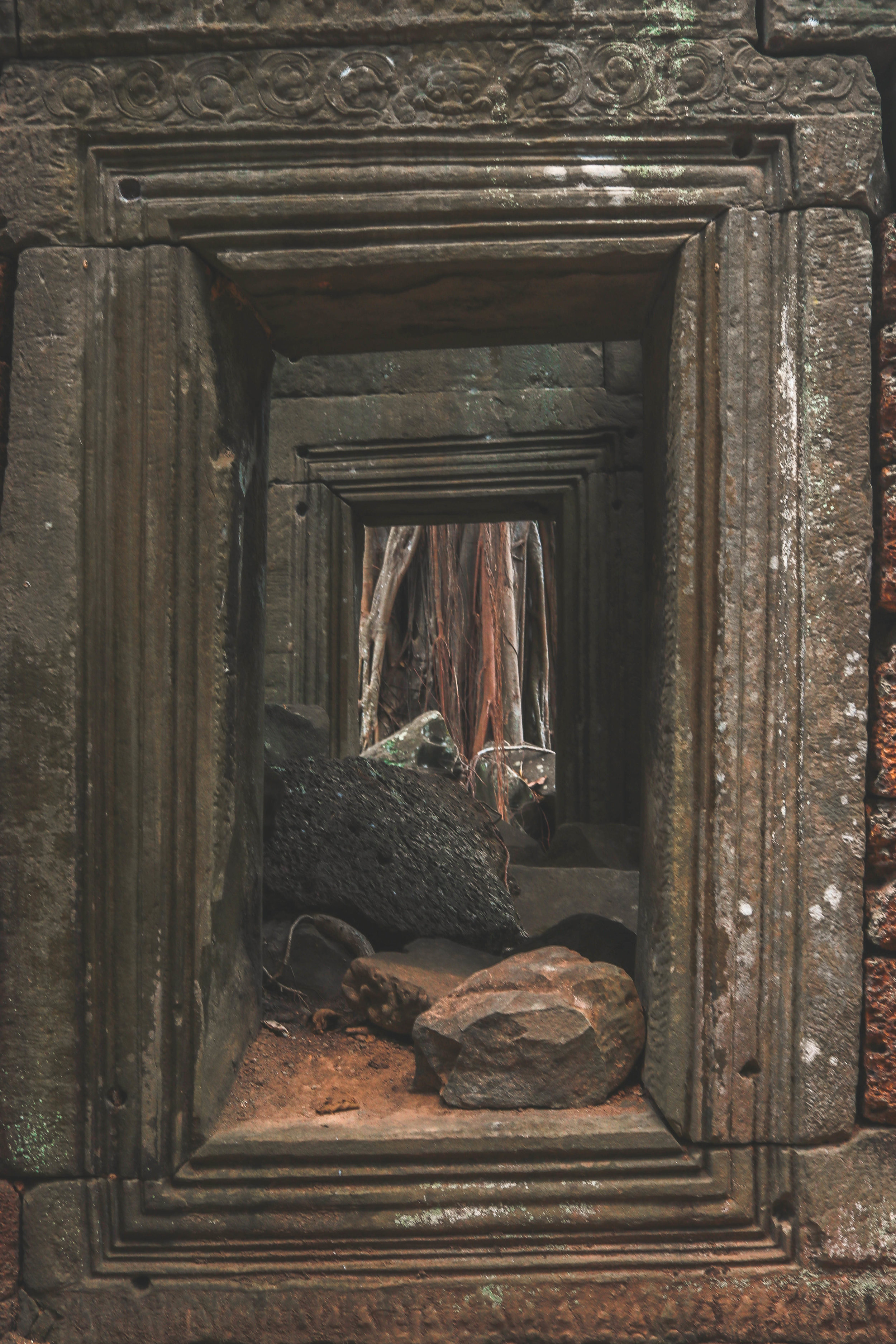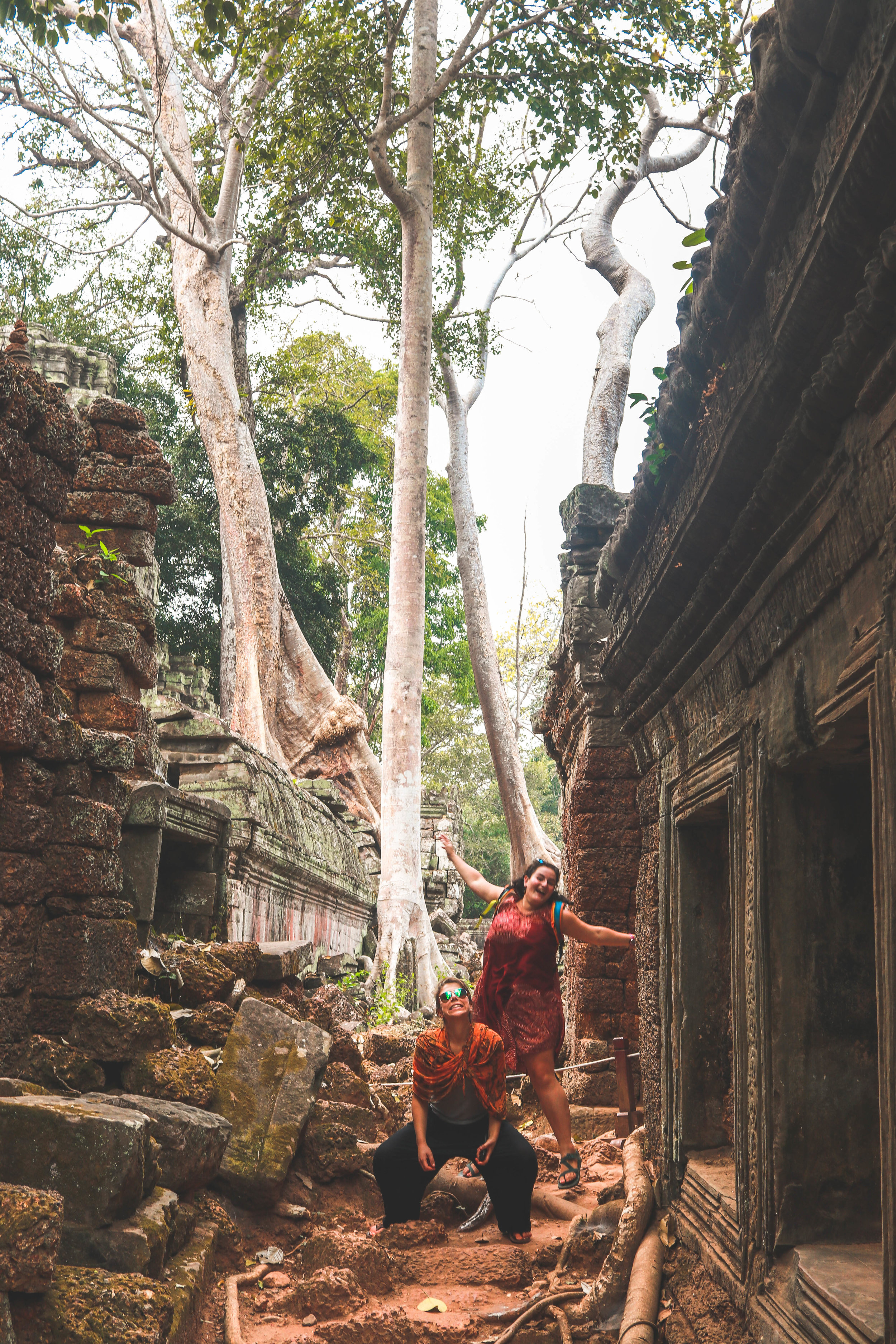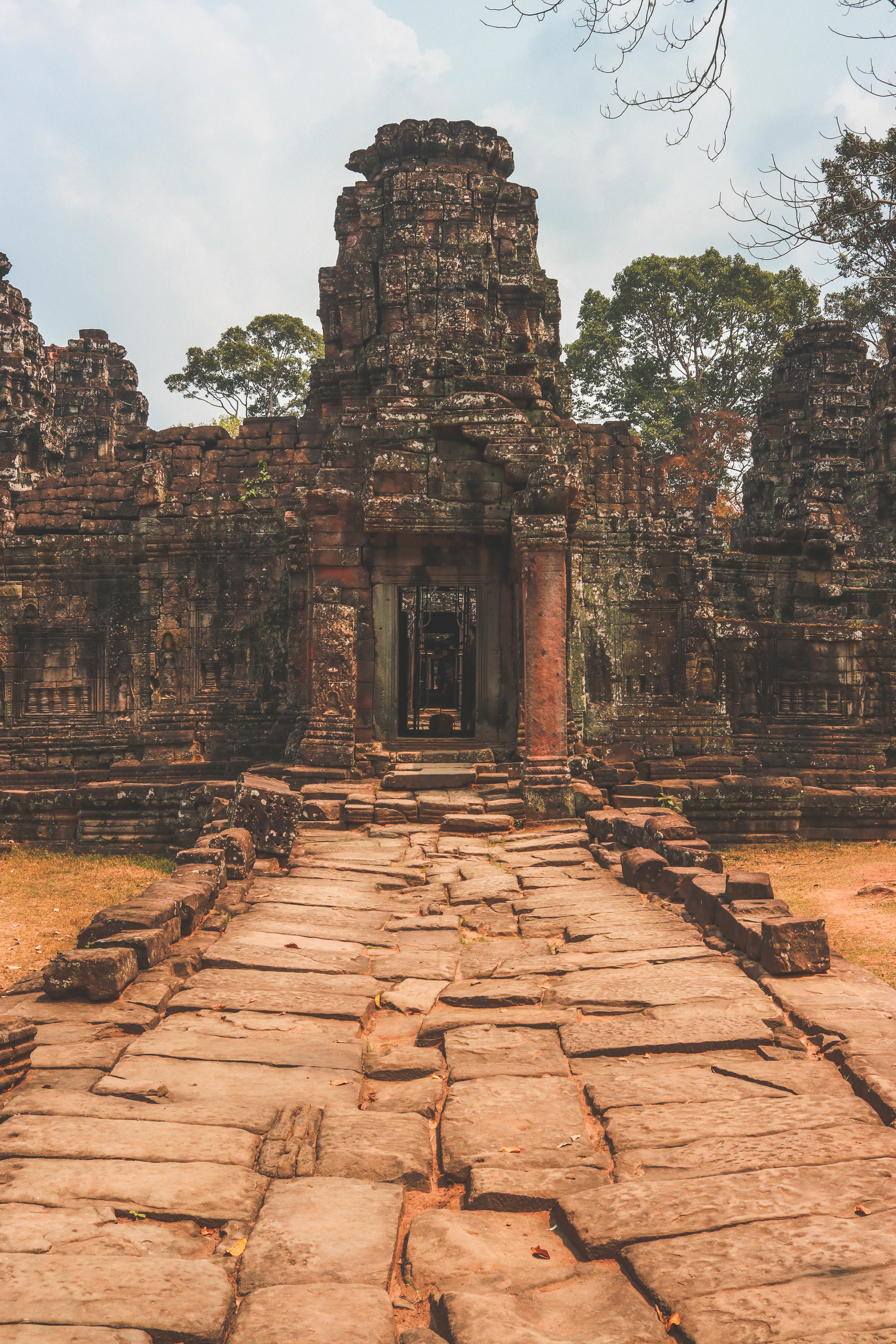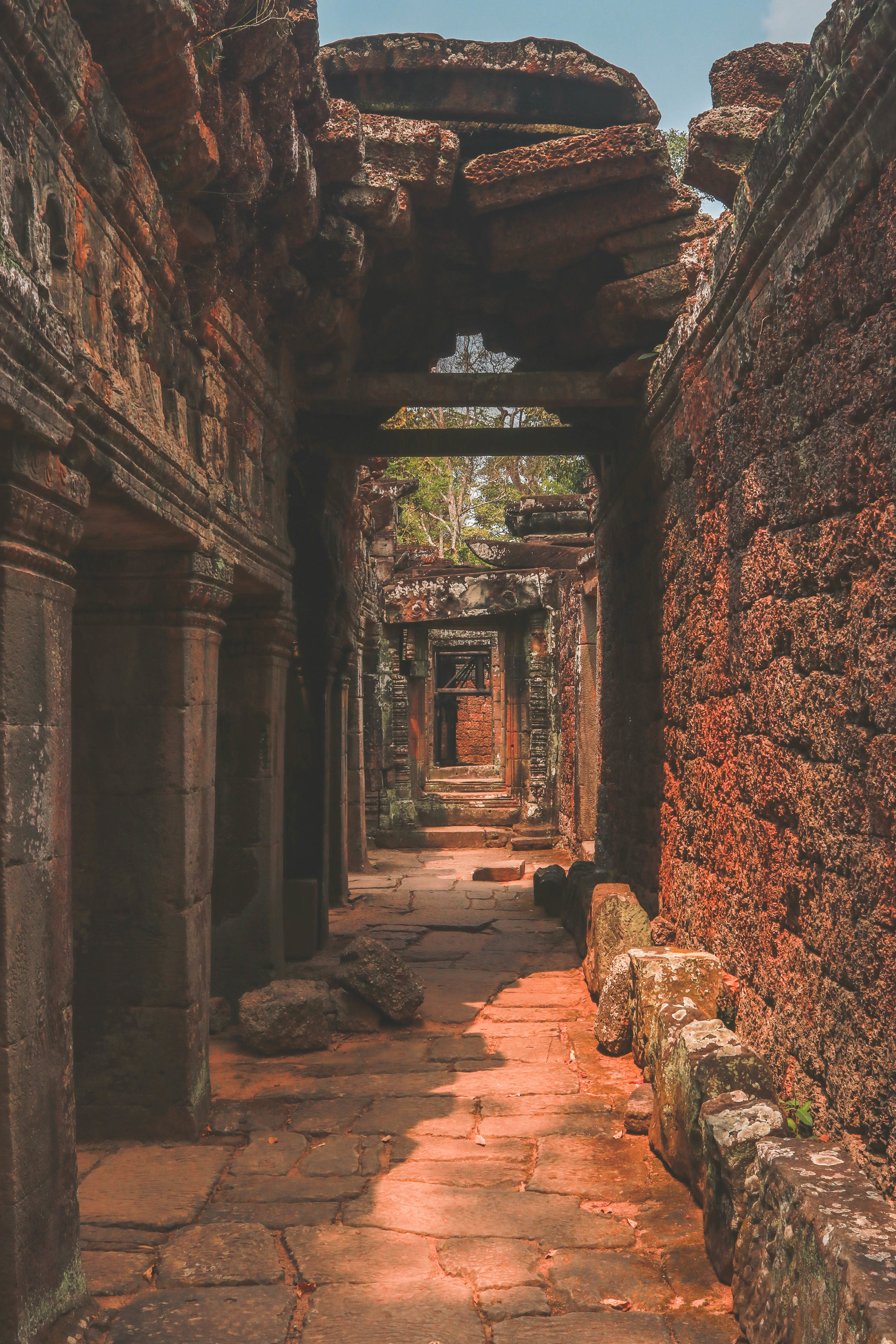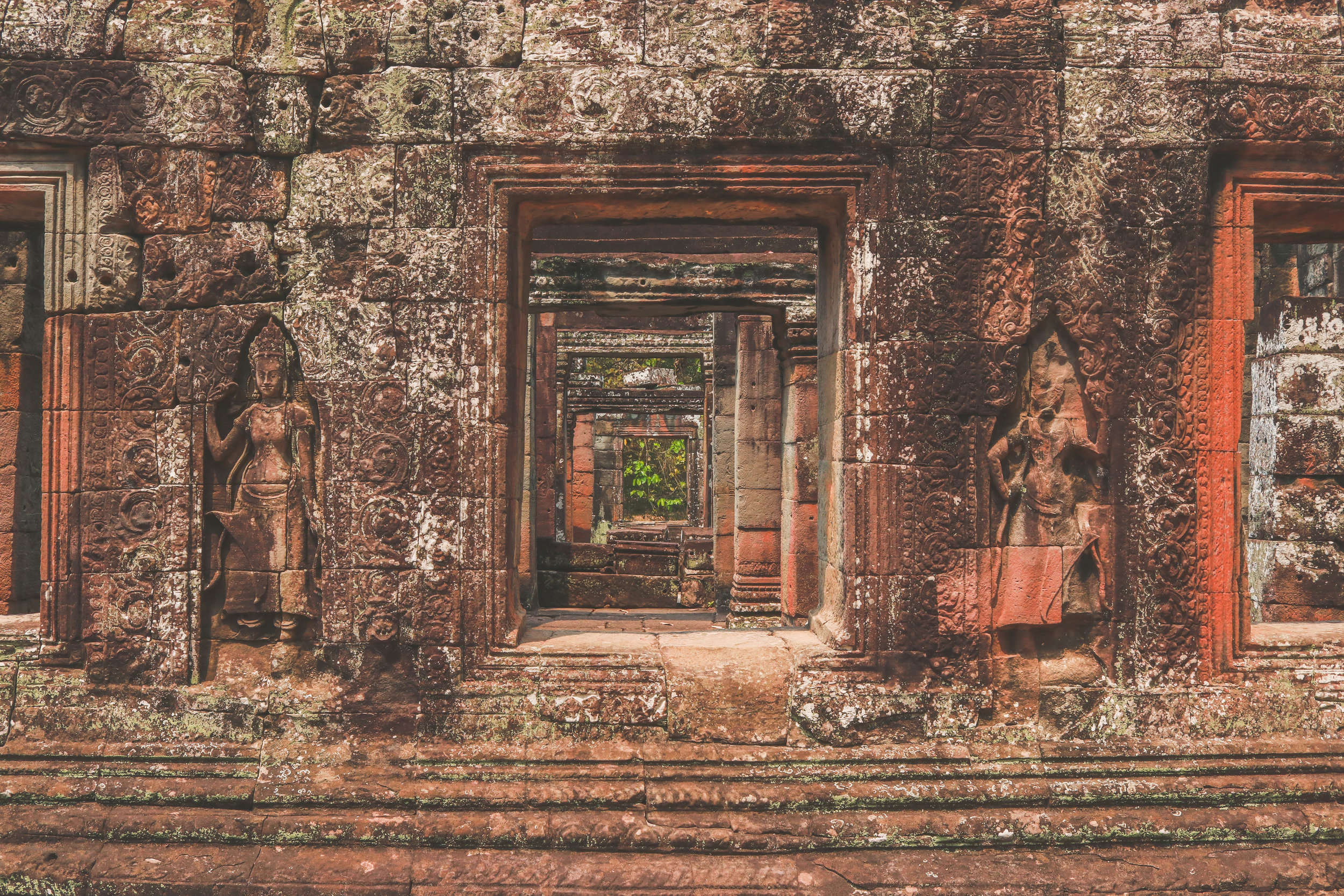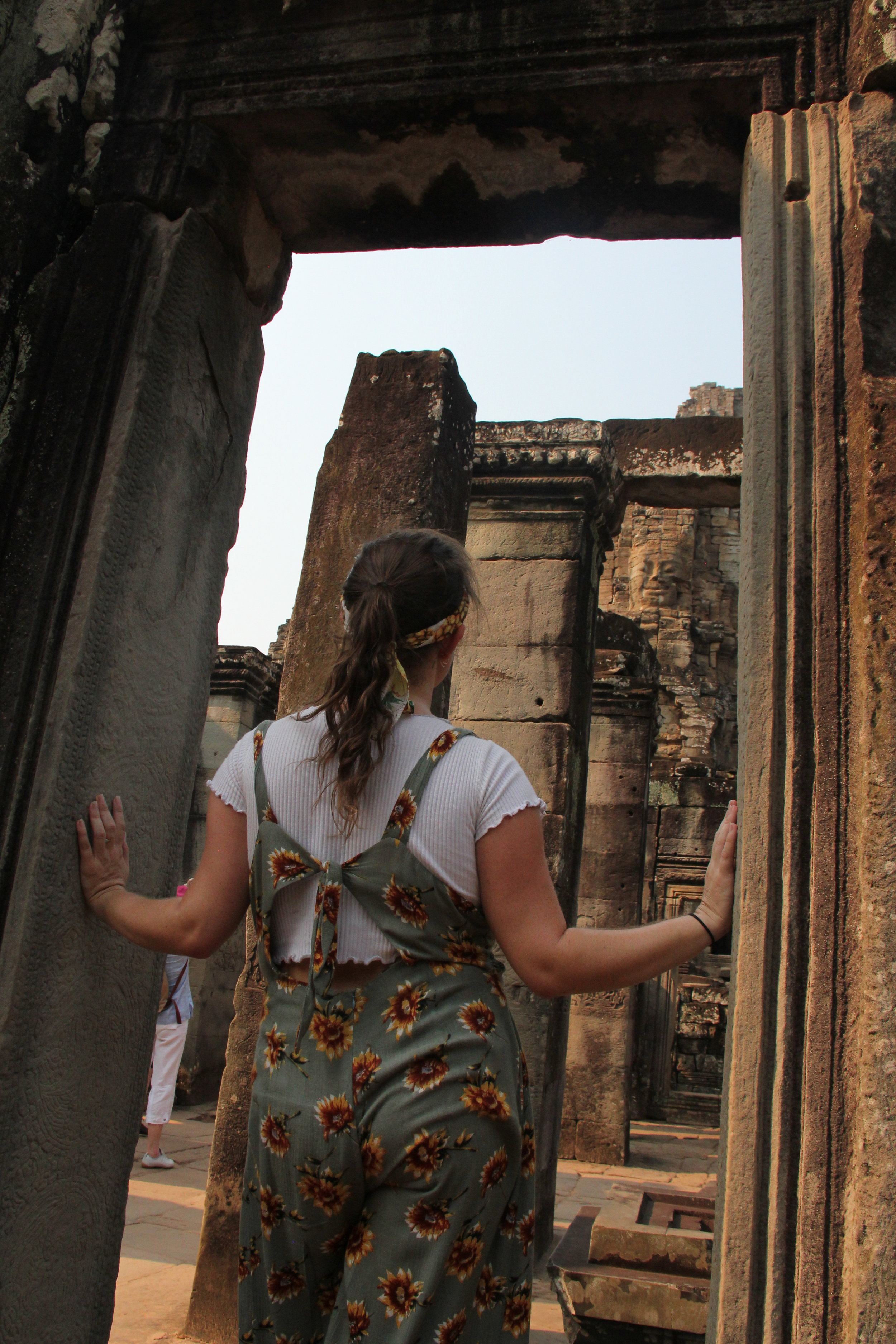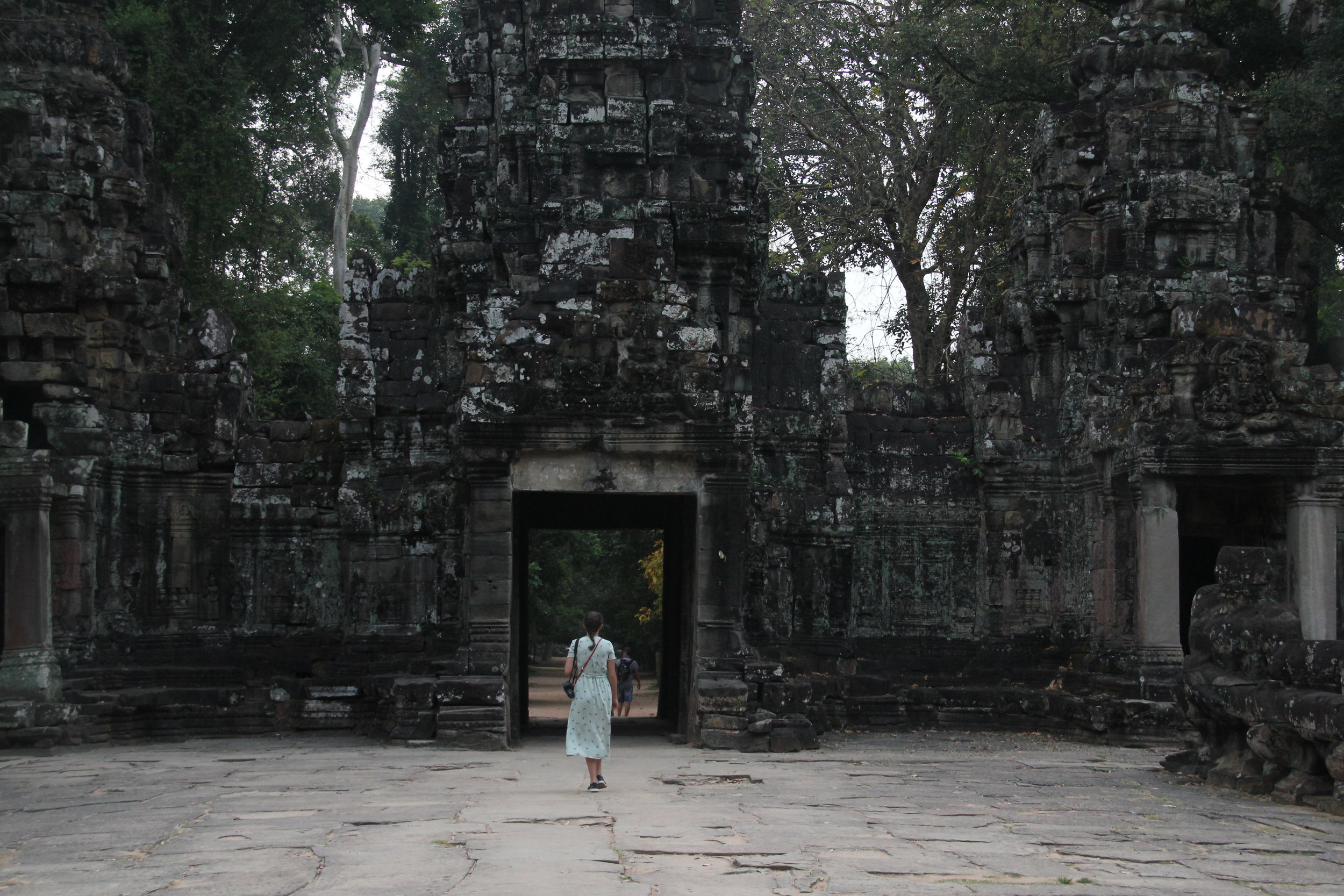Angkor Wat Travel Guide
Everyone calls it Angkor Wat. Technically Angkor Wat is just one of the famous temples, but there are over 70 others to be appreciated as well! As a Unesco World Heritage Site, Angkor is listed as one of the most important archeological sites in all of Southeast Asia, and the largest religious site in the world. The ruins provide a glimpse into what life was like in the ancient Khmer Empire from the 9th to 14th centuries.
If you’ve ever dreamed of climbing over tumbled stones and tiptoeing through cool, dark ruins, Angkor should be at the top of your bucket list. The sun glides over the ancient city with a tantalizing glow that makes you want to quit your job and become an archeologist. Dedicate at least 2-3 exploration days to give the surreal wonderland the time it deserves.
Planning your trip
The Angkor Archeological Area encompasses over 400 square kilometers. It would take weeks to see all of it. The ticket offices offer either one-day ($32) or three-day passes ($60). One day is not nearly enough.
Let me repeat that. One day is not nearly enough.
Opt for the three-day pass even if you’re only planning on going for two days. It’s still cheaper than buying two one-day passes. If you really only have one-day, try to hit the major must-see’s like Angkor Wat for sunrise, the many faces of the Bayon, semi-restored ruins of Ta Prohm (Tomb Raider), and at least one of the smaller temples on the East Baray.
Remember that Cambodia gets very hot, and the middle of the day is absolute murder. You WILL sweat through your pants. Plan to go in the morning, or just the afternoon. If you’re planning an all-day marathon, leave a few hours during peak heat to sit inside for lunch or sip a cold coconut in the shade.
An entire day in the sun will be extremely exhausting and you won’t be able to appreciate the legendary temples if you’re hot and cranky
We didn’t realize how enormous Ankor is. It can take 10-15 minutes to get from place to place, if not longer. Do your homework. Look at a map of Angkor, star your “must-sees,” and build your day based on regions around those sites. It’s much more manageable if you organize your day by groups.
We bought a guidebook for US$10, which made it very easy for us to pick our favorites. The book explains the history and original design of each site, and it also gives you a recommended route through them, pointing out key features along the way. It’s an easy way to avoid feeling cluelessly lost in an ancient world of stonework mazes.
Getting Around
Being that everything is so far apart, walking is not a realistic option. If you’re traveling solo and/or strapped for cash, at least rent yourself a bicycle. You’ll sweat yourself silly, but it won’t take as long as walking. Better yet, rent a scooter if you’re a competent driver.
The best option though, Ankor by tuk-tuk. If you can expend the cash to rent a tuk-tuk for even one of your days, you’ll be able to explore so many more regions. Make a new friend and split the cost. Tuk-tuks can take you to the further areas of Ankor, and with few people wandering around, you’ll get some amazing alone time in one of the most serene sites of the world. Plus, tuk-tuk time is AMAZING for resting your legs and getting out of the sun for a bit. You’ll just really optimize your time and energy if you rent a tuk-tuk.
Not to mention, most tuk-tuk drivers grew up in Angkor. Generations and generations (far more than you can honestly comprehend) have lived within these ancient walls. Their knowledge is unparalleled, and will greatly enhance your experience.
Try to avoid the time-wasting confusion that we had, and pick a time and place to meet up if you’re in a big group. Otherwise you’ll spend 45 minutes, like we did, waiting for each other at opposite ends of the temple. Also make sure you have your tuk-tuk driver’s name, license plate, and cell phone number if possible.
What We Did
We opted for the three-day pass, even though we only went for two days. As a group of 6, we were able to split the cost of two tuk-tuks, which ended up saving us time and energy, so we were able to pack in more sites per day. Plus, our guides were super informative and knew exactly where we should go, in what order, at what time of day.
We started our first day at about 1pm, so by the time we bought our tickets and really got into the grounds, the sun was low in the sky and people had already started to leave. It’s still hot, but it’s more manageable and way less crowded. Our second day was over by lunch. Albeit, we started before the day even began. By early afternoon, the high heat and exhaustion had us waving the white flag. We ended our day with lunch and went home for a well-deserved cat nap.
Here are some groupings of sites that we organized our trip by:
Angkor Thom
Angkor Thom is the famous walled city that remains to be the most recent location of the capital of the Khmer Empire, founded by Jayavarman VII in the late 12th century. Inside the epic walls are loads of magnificently restored temples, namely Angkor Wat and The Bayon. These inner temples are normally busiest in the morning, right after everyone watches the sunrise. The South entrance itself is a breathtaking preview of what lays just inside. Well worth a stop.
Angkor Wat, unless you want to see it immediately after sunrise with everyone and their mothers, is best explored in the afternoon.
Watch as the setting sun casts a perfect golden glow across the 200+ faces of Bayon - Ankor’s most iconic temple.
Afterwards, we drove past the Elephant Terraces to the East gate.
Angkor Wat Sunrise
Like most other visitors, we wanted to catch the blazing sunrise over of Angkor Wat. We were picked up at 5 in the morning, which gave us plenty of time to get comfy before the sky went alight. If you’re insistent on being right up at the water for your perfect shot, try leaving a bit earlier. It gets tightly packed up front.
Once the sun rises, everyone will rush to go inside. We opted to head straight for the farthest temples first, where there would be less visitors.
Baray of Preah Khan
The temples on the north side of the East Baray are generally smaller temples, and significantly less people in the morning.
Preah Khan
This far-out temple is mostly unrestored, with walls crumbled in and tunnels blocked by rubble. What was once a city/temple/university is now a beautifully deconstructed work of art.
Walking around this temple in the early morning gives you a bit of scope as to how rigorous the creation of these buildings must have been, and how magnificent the architectural design is, down to the carved images in the crumbled stone.
Neak Pean
The calm lake in the glistening morning light is reason enough to visit Neak Pean.
The temple is made up of four pools, representing the four elements, connected to one central source pool with a shrine in the middle. Originally built as a hospital, the pools were meant for sick visitors to bathe in healing waters. Look for the intricate animals sculpted on the central temple!
Ta Som
This small temple was built as a a dedication to Jayavarman VII’s father, Dharanindravarman II. One of the gopuras, or entranceways, is overgrown with an old strangler fig.
In opposite corners of the central sanctuary, there are late cavernous rooms that were once libraries. Around the outsides, there are big open pavilions to have a stroll around.
East Baray
The East Baray was built as a water retention system, used for either irrigation or religious purposes.
East Mebon
This Hindu temple dedicated to Shivu is one of the older temples on the archeological grounds, built by Rajendravarman in the late 10th century. While it appears to be a temple-mountain, it was actually an temple-island back when the East Mebon was a filled. While it was once surrounded by water and only approachable by boat, it now stands as an obvious mountain among the flats of the dried reservoir. Look for the guardian elephants on each of the corners of the second tier!
Srah Srang
This reservoir still has water! It’s not full… but it’s still beautiful in the golden Cambodian glow.
Ta Prohm
Ta Prohm was selected by the École française d’Extrême-Orient to be minimally repaired, in efforts to provide visitors with an authentic experience as to how many of the temples were rediscovered after being surrendered to the jungle for centuries. Wooden boardwalks guide you around the ruins, passing stoic fig trees and crumbling piles of stone.
Plus, it was featured in Angelina Jolie's Temple Raider.
Being one of the most popular temples, it’s usually pretty touristy. Expect to queue for a photo with the big trees...
Further Adventures
We didn’t make it to the farthest temples on our third day, but that’s our first stop whenever we go back! These are among the least visited sites in the entire acrchaelogical area, but also some of the most worthwhile.
Banteay Srei is at the top of a hill, only accessible by a one-way road. Before noon, the road goes uphill. After 12pm, it switches and you can go downhill. Also, tuk-tuks can’t make it up the hill, so you have to rent a van or book a separate tour. It makes it a bit difficult planning-wise.
Phnom Kulen
This requires an additional $20 entrance fee separate from your original ticket, because it’s not technically part of the archaeological site, but rather a part of Phnom Kulen National Park.
Kbal Pean
If you’re up at Phnom Kulen National Park, you can go see the sacred fertility waters nearby, Kbal Pean. Otherwise known as the “River of 1000 Lingas,” this Hindu shrine is unlike any of the other temples. The sandstone riverbed has been carved into motifs depicting an array of Hindu gods, including Shivu, Vishnu, and Brahma.
If you’ve got the time and are willing to shell out a bit more cash, you can make an entire day of venturing out to Banteay Srei, Kbal Spean, and Phnom Kulen for a day among the unspoiled sites!



